65mm Film For Photographers
Have you ever watched an IMAX film and wanted to shoot the same format in your medium format or large format camera? Kodak’s most advanced film is made for the motion picture industry. The largest stock they produce is 65mm, which can now be shot in 70mm film backs and cassettes, thanks to Mercury Works' 65mm ecosystem.
Mercury Works is now releasing 65mm film to photographers in 50ft and 100ft bulk cans for easy loading into standard 70mm cassettes, as well as offering processing for this format, and producing a range of backs and accessories to make shooting this easily accessible and joyful!
Order film here !

On this page you'll find complete information about all compatible cameras, all available film stocks, and the essential accessories.
If you still have questions, please ask them in the Mercury Works Facebook group if possible, so our answers will be visible to everyone. Also, please sign up for our mailing list and select "65mm" as well as any other formats you're interested in to receive infrequent but important announcements about new releases.
Compatible Cameras
Most professional medium format and large format cameras with removable backs can shoot 65mm film. You will need a 70mm back for your camera, 65mm spools from us, and vintage 70mm metal cassettes. Some backs require upgrading or modding to all-perf status. The following table lists all compatible cameras, along with everything you need to shoot 65mm.
| Camera | Back | Frame Size | Spools | Modification Needed | Notes |
|---|---|---|---|---|---|
| Hasselblad V | A70 | 6x6 | Offset | All-Perf Wheel (Instructions) | Video |
| Large Format (4x5) | Mercury 65/70mm Panoramic | 6x12 | Centered | none | Video |
| Linhof Cine Rollex | 6x7 | Centered | All-Perf Mod (PDF) | ||
| Graflex RH-50 | 6x7 | Centered | none | ||
| Beattie Coleman Transet | 6x7 | Transet | none | ||
| Mercury 4x5 Cut Film Holder | 6x12 | none | none | ||
| Grafmatic 45 | 6x12 | none | Mercury Septums | [1] | |
| Mercury Stereo 12 | Mercury 65/70mm Panoramic | 6x12 | Centered | none | Video |
| Mercury 4x5 Cut Film Holder | 6x12 | none | none | ||
| Grafmatic 45 | 6x12 | none | Mercury Septums | [1] | |
| Mamiya RB67 | RB 70mm Film Holder | 6x7 | Offset | All-Perf Mod (PDF) | |
| Mercury RB Custom 65/70mm Back | 6x7 | Centered | none | Previously also 6x6 and 6x9 | |
| Mamiya Universal Press | RB 70mm Film Holder | 6x7 | Offset | All-Perf Mod (PDF) | Requires "Press G Adapter" |
| Mercury RB Custom 65/70mm Back | 6x7 | Centered | none | ||
| Mamiya RZ67 Professional | RB 70mm Film Holder | 6x7 | Offset | All-Perf Mod (PDF) | Requires "RZ67 G Adapter |
| Horseman VR Series | RB 70mm Film Holder | 6x7 | Offset | All-Perf Mod (PDF) | |
| Mercury RB Custom 65/70mm Back | 6x7 | Centered | none | ||
| Graflex 23 (Century, Baby Graphic, XL) | RB 70mm Film Holder | 6x7 | Offset | All-Perf Mod (PDF) | |
| Darkslide Handle | [2] | ||||
| Mercury Universal Medium Format | RB 70mm Film Holder | 6x7 | Offset | All-Perf Mod (PDF) | |
| Mercury RB Custom 65/70mm Back | 6x7 | Centered | none | ||
| Pentax 645 series | Pentax 645 70mm Insert | 645 | Max Offset | 65mm Mod (PDF) | |
| Bronica ETRS series | Bronica 70mm Back | 645 | Max Offset | All-Perf Mod | [3] |
| Rolleiflex 6000 series | Magazin 70 | 6x6 | Offset | All-Perf Mod (PDF) |
Notes
[1] Mercury Works modifies Grafmatic 45 septums to take either 65mm or 70mm film. You can mix 4x5 sheet film, 65mm film, and 70mm film in a single Grafmatic 45. See this video for details. If using on a Mercury Stereo camera, the Grafmatic must be made “Stereo Ready” by removing its metal film number imprinting wheel (also recommended for large format use). This modified Grafmatic 45 is available for purchase here. Individual custom septums are available here.
[2] To mount RB67 backs on Graflex 23 cameras, you must cut or file off the two backside metal hooks on the darkslide handle. This does not affect function.
[3] This is a more involved modification than for other backs. You will need this part for the process.
Rolling to 120 and 220
You can also use your discarded 120 spools and backing paper to roll this film into 120 and 220 rolls, for use in cameras that can't take the film directly. You just need this slitter (specify "65mm to 120") and this tutorial .
Advantages of 65mm film
- Less than 1/2 the price of 120 film!
- Most advanced film emulsions ever developed
- Amazing color, low grain, four different options
- Each roll can hold over 5 and a half times as many frames as 120
- Variable load cassettes (you choose how big each roll is)
- Mid-roll cutting (cut your roll any time for developing)
- Far better protection against light leaks, scratches, halation, and X-rays
- Much less film curl than 120 (better flatness)
- Can be developed in long roll format by M-Alchemy or at home
- Can be printed to medium format slides (just like IMAX 70mm exhibition)
Developing
Our lab, M-Alchemy, can develop and scan this film for you, as well as make medium format slides from it.
You can also develop it at home. We offer Paterson reels (for up to 5ft lengths), Jobo reels (for up to 5ft lengths), and our complete 65mm and 70mm long roll home processing system (for up to 13ft).
This film can be developed C-41, traditional BW, or ECN-2 (recommended). It has a remjet layer that must be removed as part of the developing process.
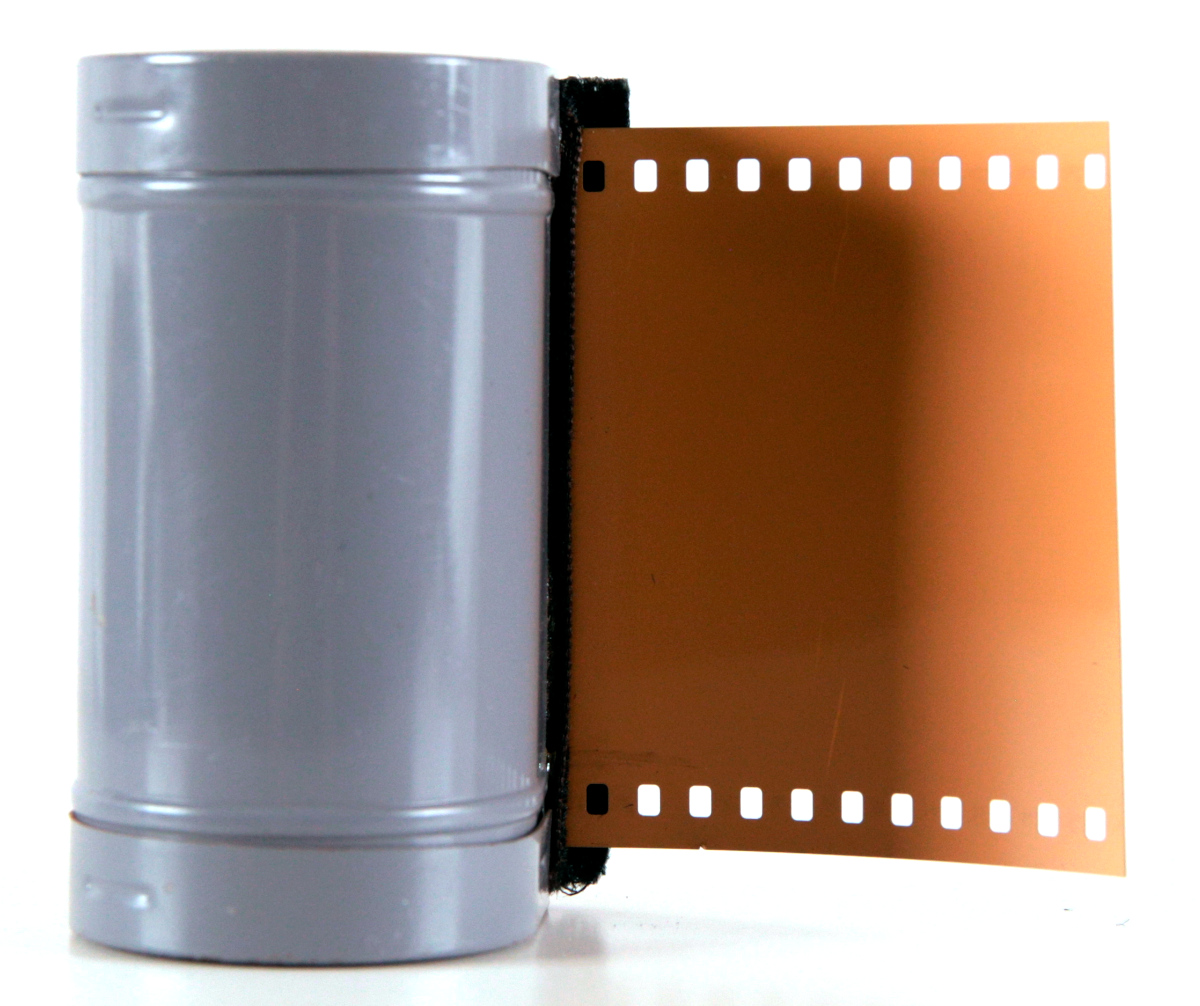
The Film
The most advanced color film ever made, at unimaginable R&D expense for the film industry, is Kodak's range of Vision 3 motion picture stock. This stock is well known to photographers in its 35mm version. But Kodak also makes it in 65mm for IMAX and other extremely high-end film productions. Mercury Works is respooling 65mm motion picture film, making it available directly to photographers for the first time ever via this campaign.
Since we receive this film in enormous cinema spools, we use a custom-built spooler to re-spool this to our custom-designed 100ft bulk spools. Our bulk spools match the form factor of 70mm spools and are compatible with any equipment that accepts those spools, such as the Alden 70mm Daylight Loader and our own Mercury 65/70mm Bulk Loader (available via this campaign; see below.) These spools are easy to handle can can also be handled directly without a loader to hand load into 70mm cassettes. The film is loaded onto our custom cassette spools, in loads of any size up to 13 feet, then placed directly into standard vintage 70mm cassettes and shot in any 70mm camera back that can accept non-perf film (which is every 70mm back with simple modifications discussed on this site.) Each bulk roll of film is encased in a standard Kodak 70mm metal can (used but in good condition, with our new labeling).
During this campaign we will offer all four Vision 3 film stocks currently made by Kodak, as well as a limited supply of expired EXR 100T, a special film stock used by Terrance Malik on The Thin Red Line.
Order film here !
Mercury Cine Color 50
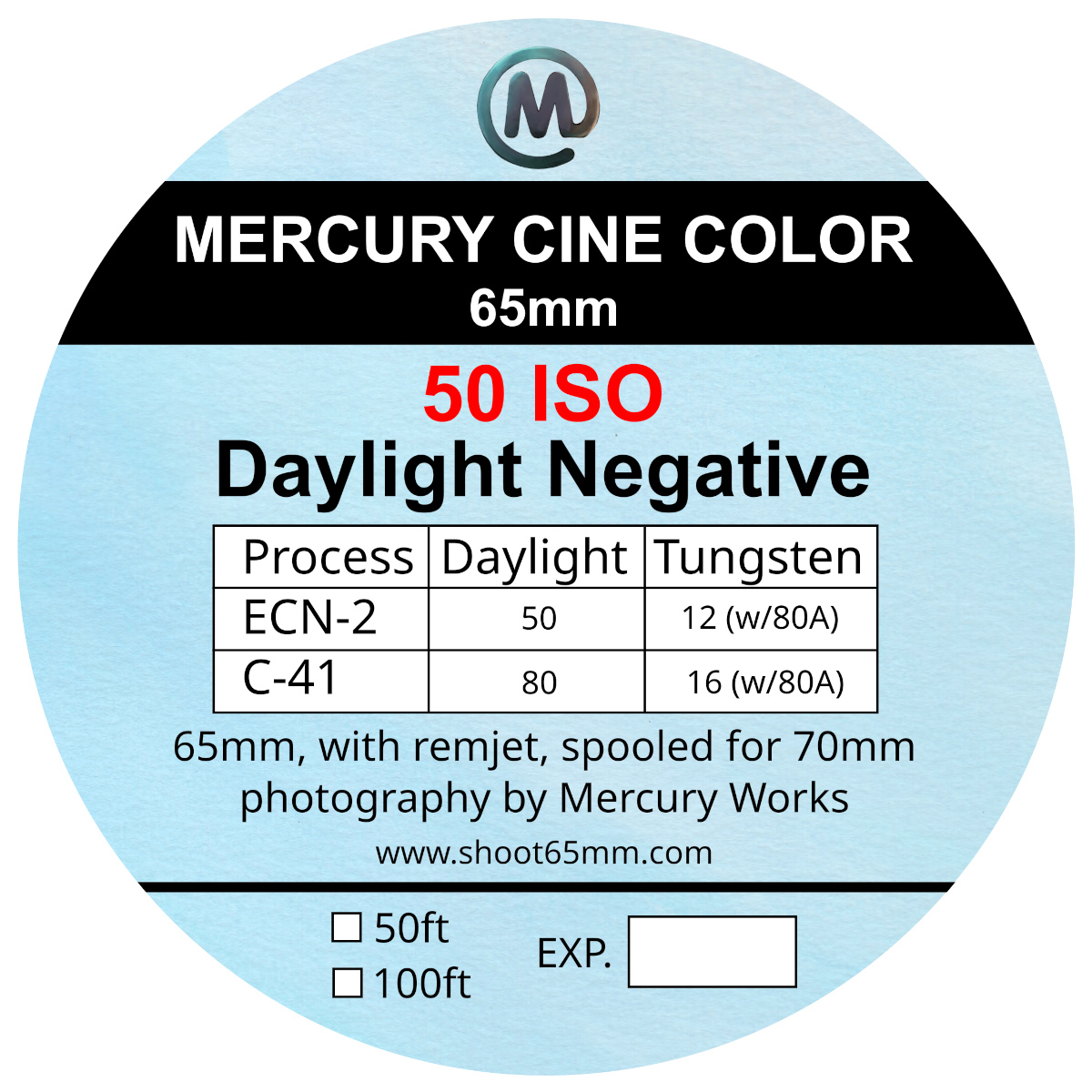
This Daylight balanced stock is the finest grain camera film ever invented. For the ultimate in resolution and color rendition, this is your stock. Perfect for landscapes, long exposures, and general outdoor shooting in bright sun.

Cine 50 example, shot on a Mercury Universal 6x9
Mercury Cine Color 250
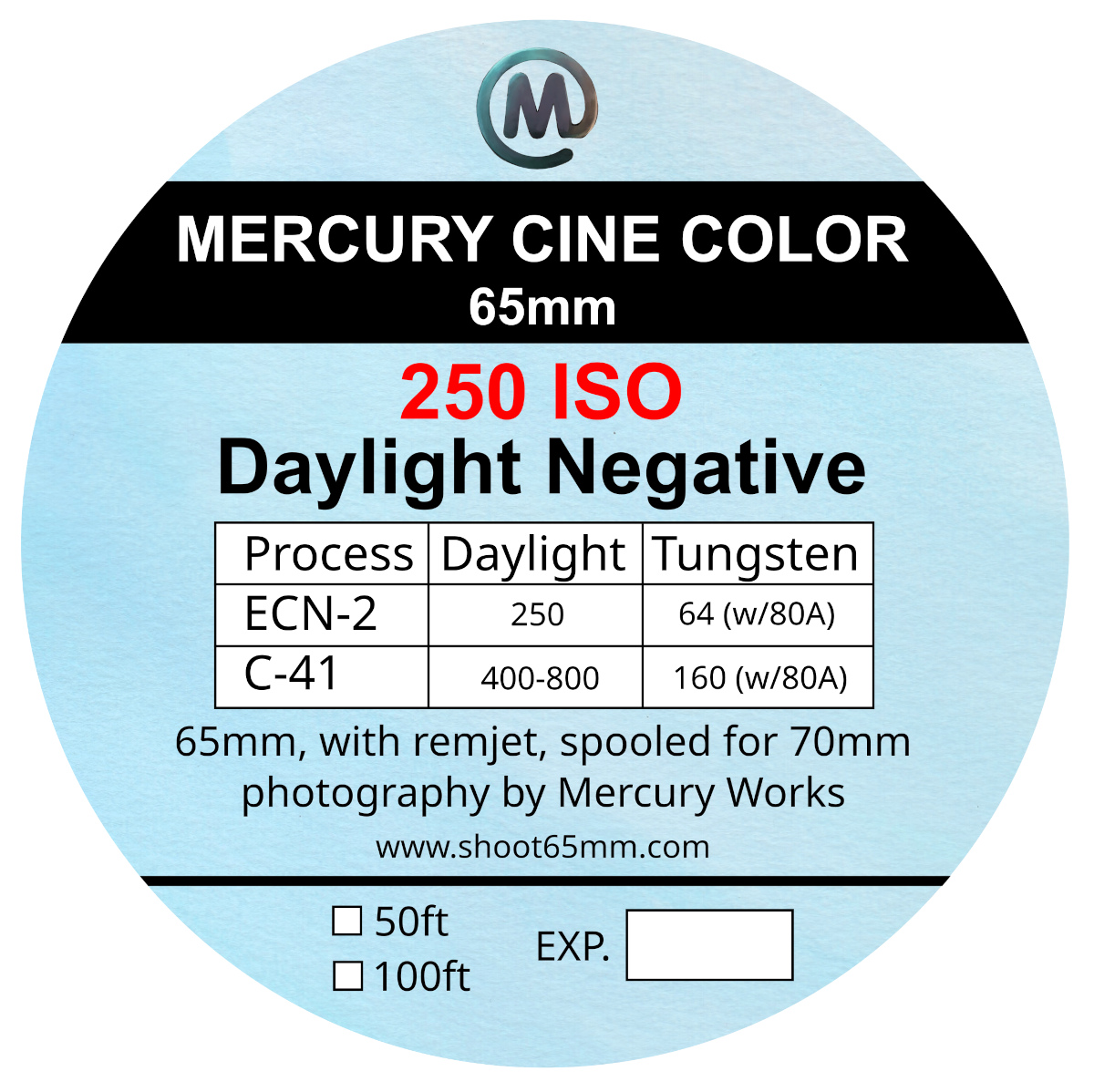
The favorite film stock of Mercury Works founder Zach Horton and many other photographers, this Daylight balanced stock is probably the most beautiful and versatile general stock ever released. It can be pushed up to 3 stops without noticeable degradation, has enormous dynamic range, retains highlights beautifully and produces rich but accurate colors. If we could only have one film stock on a desert island, it would be this one.
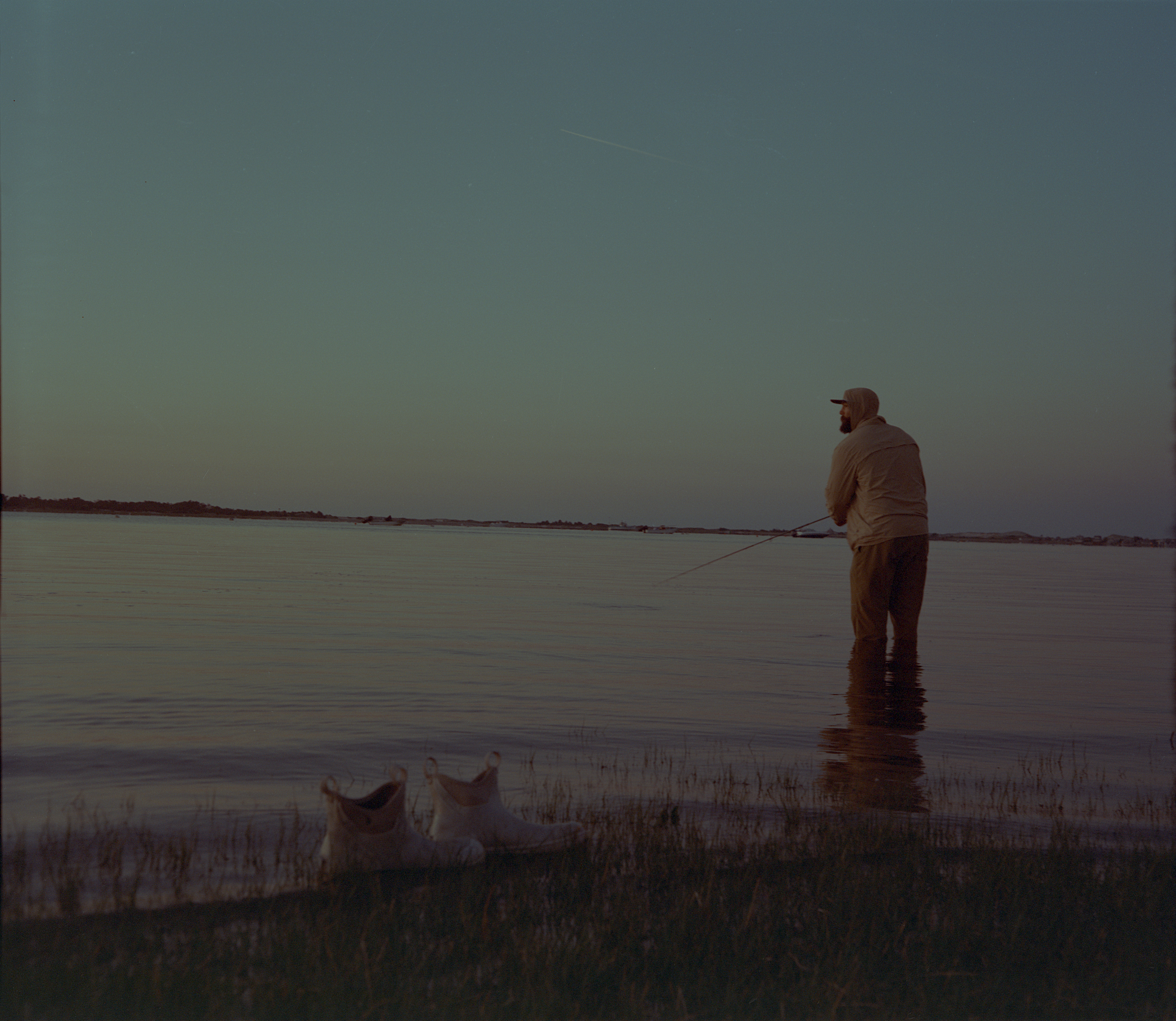
Cine 250 example, shot on a Mercury Stereo 12
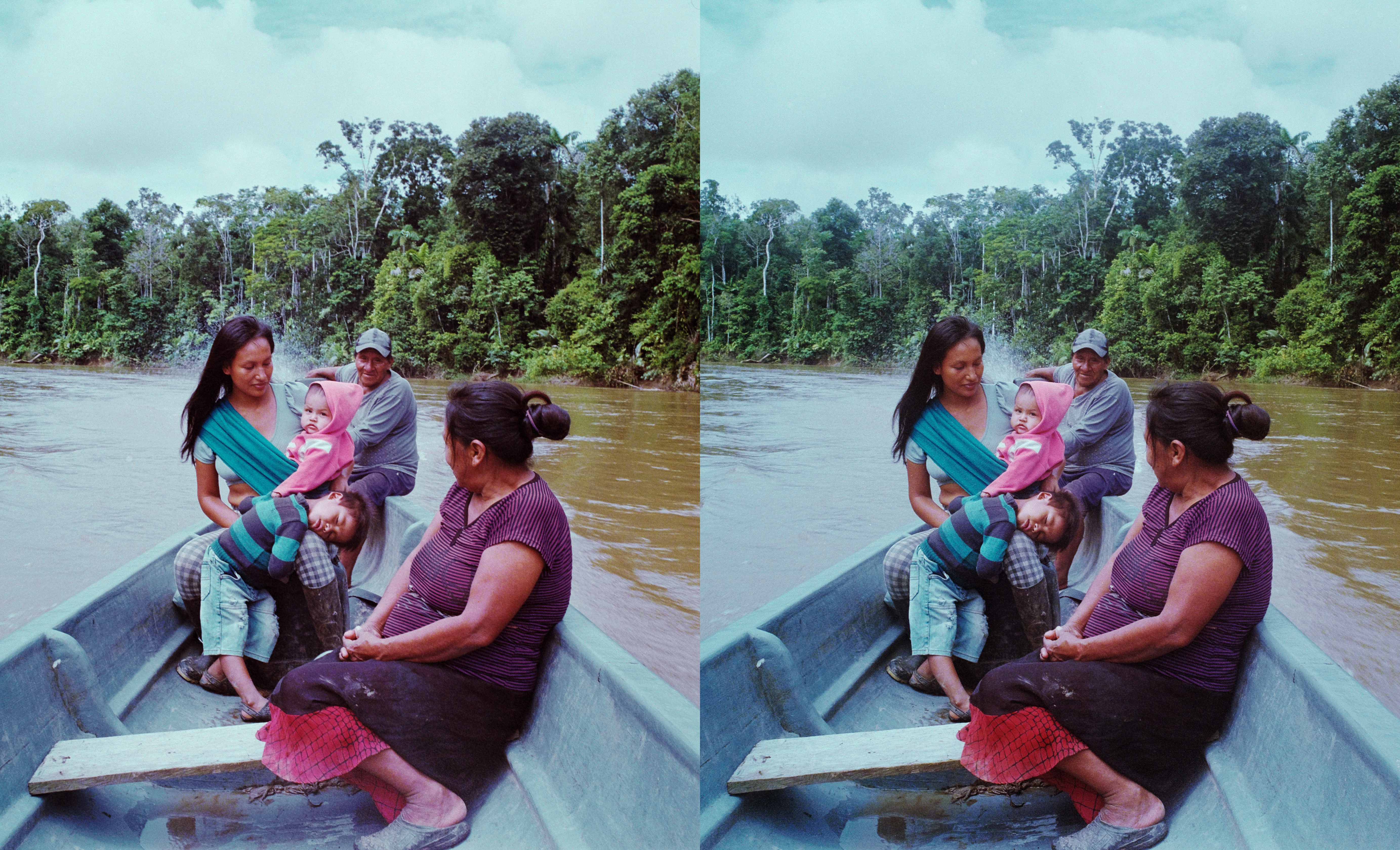
Cine 250 3D example, shot on a Mercury Stereo 12
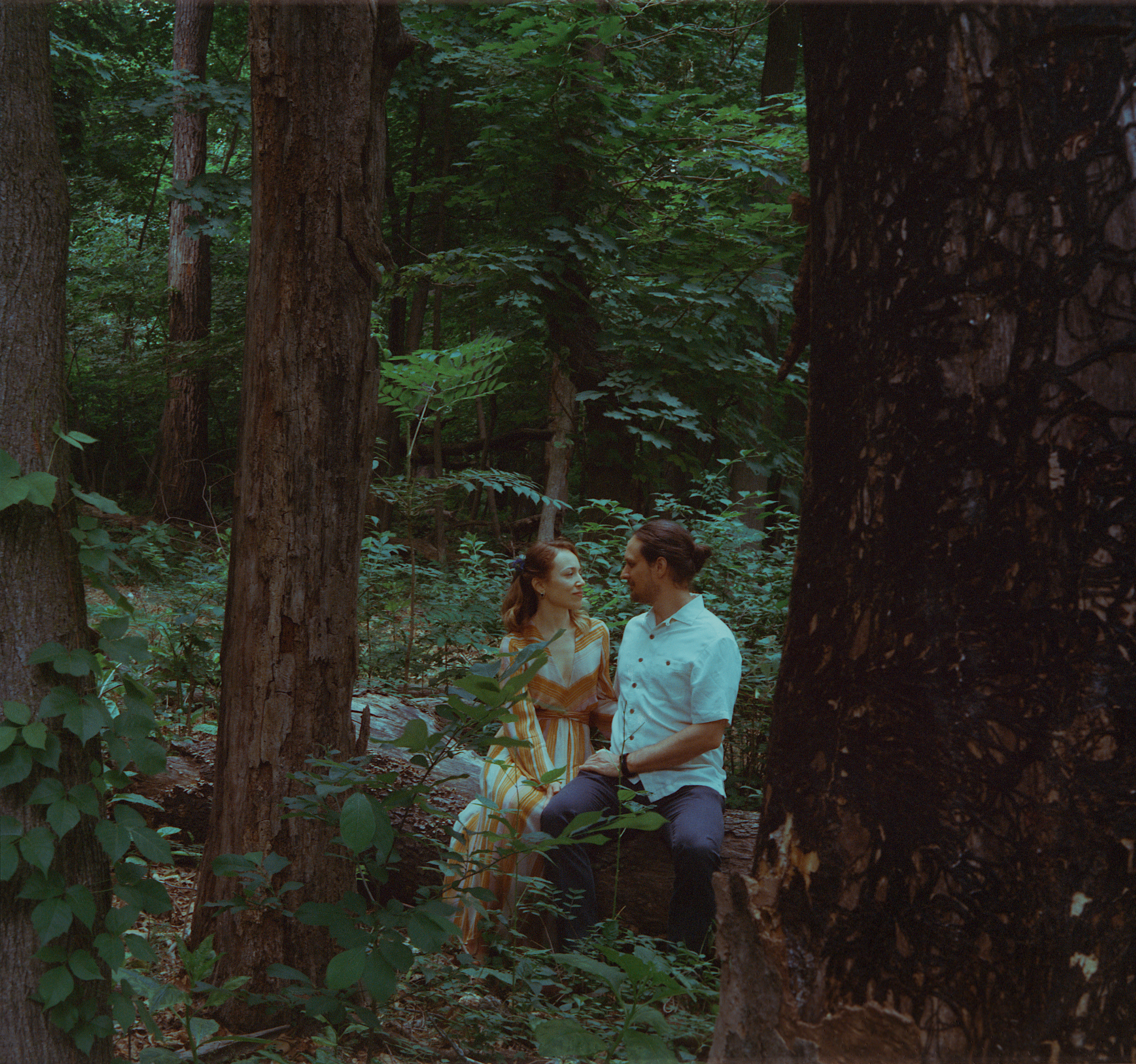
Cine 250 example, pushed 3 stops (exposed ISO 1600) on a Mercury Stereo 12
Mercury Cine Color 500
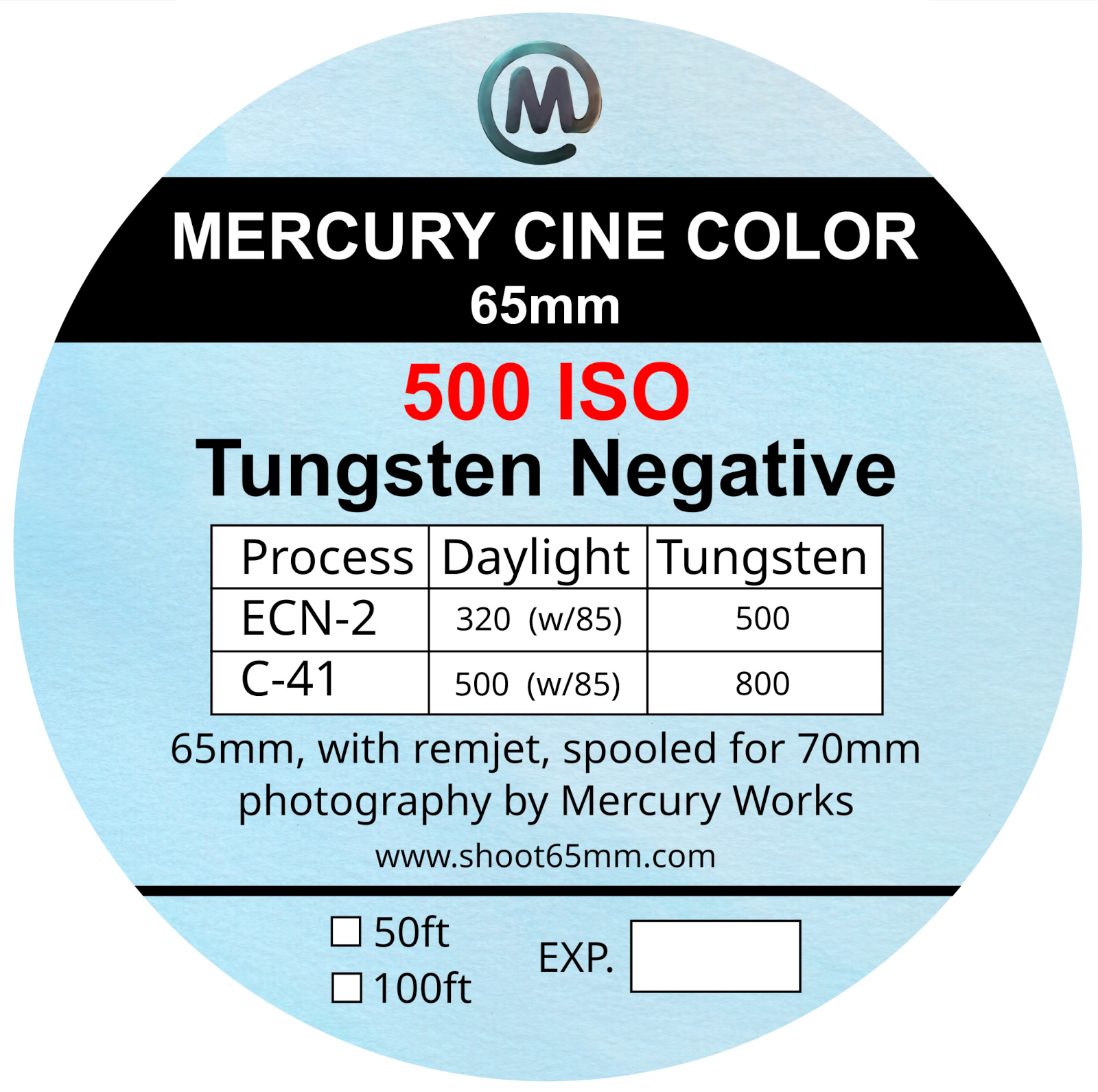
This film needs no introduction. By far the most famous of the Vision 3 films, this is an incredible high-speed film for nighttime or indoor shooting. In a pinch it can also be used for general photography.
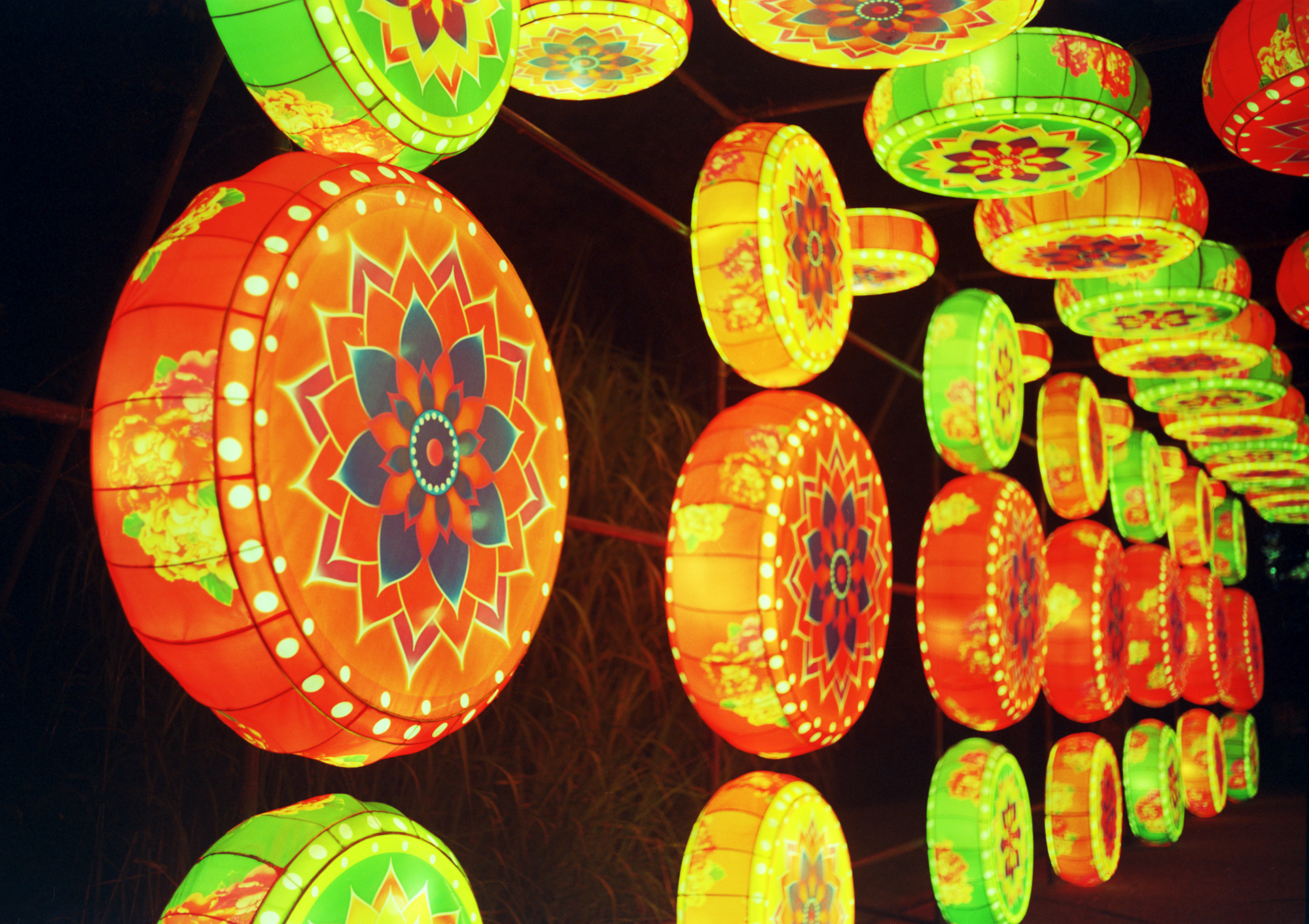
Cine 500 example, shot on a Mercury Universal 6x9
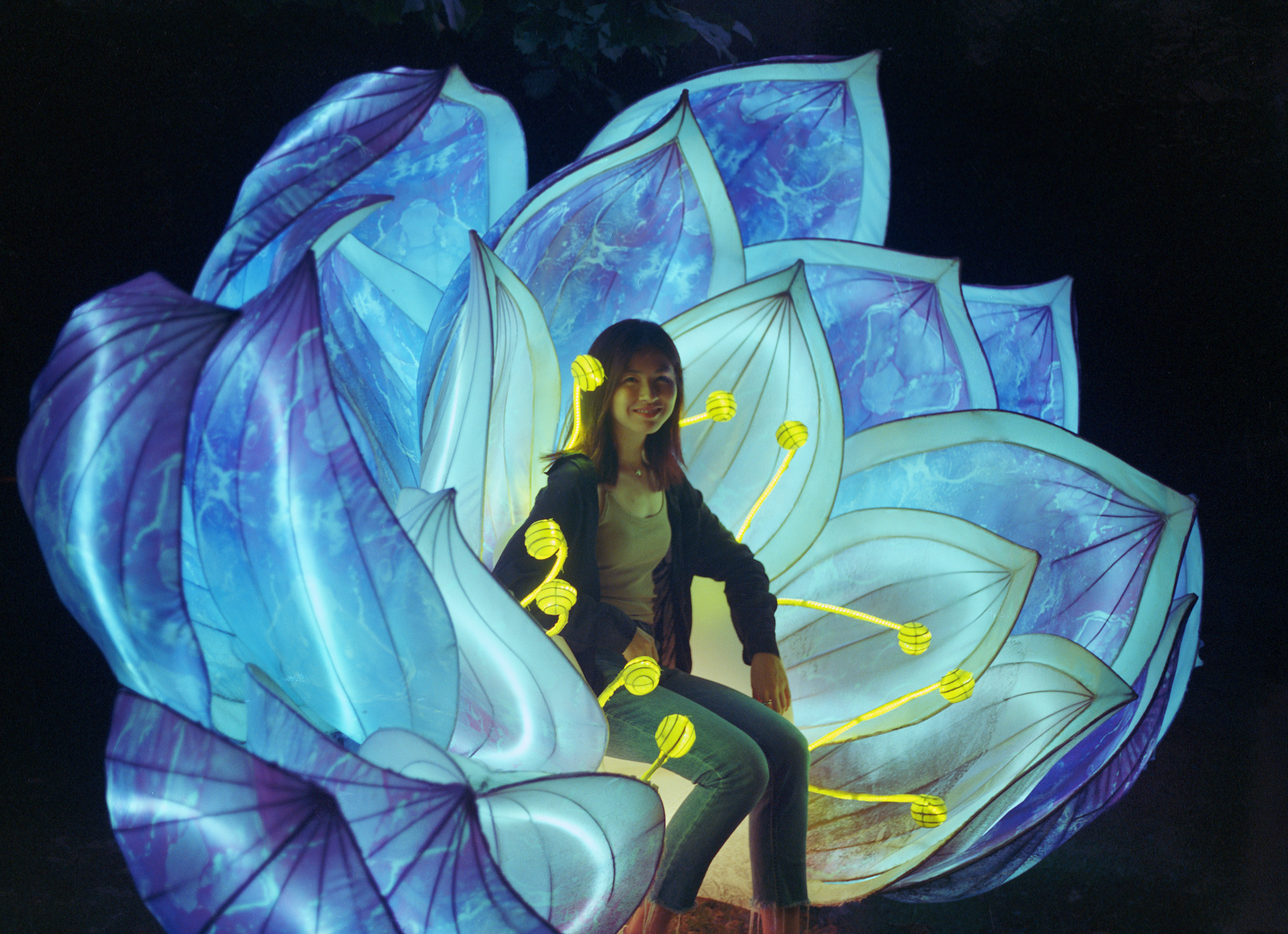
Cine 500 example, shot on a Mercury Universal 6x9
Mercury Cine Color 200
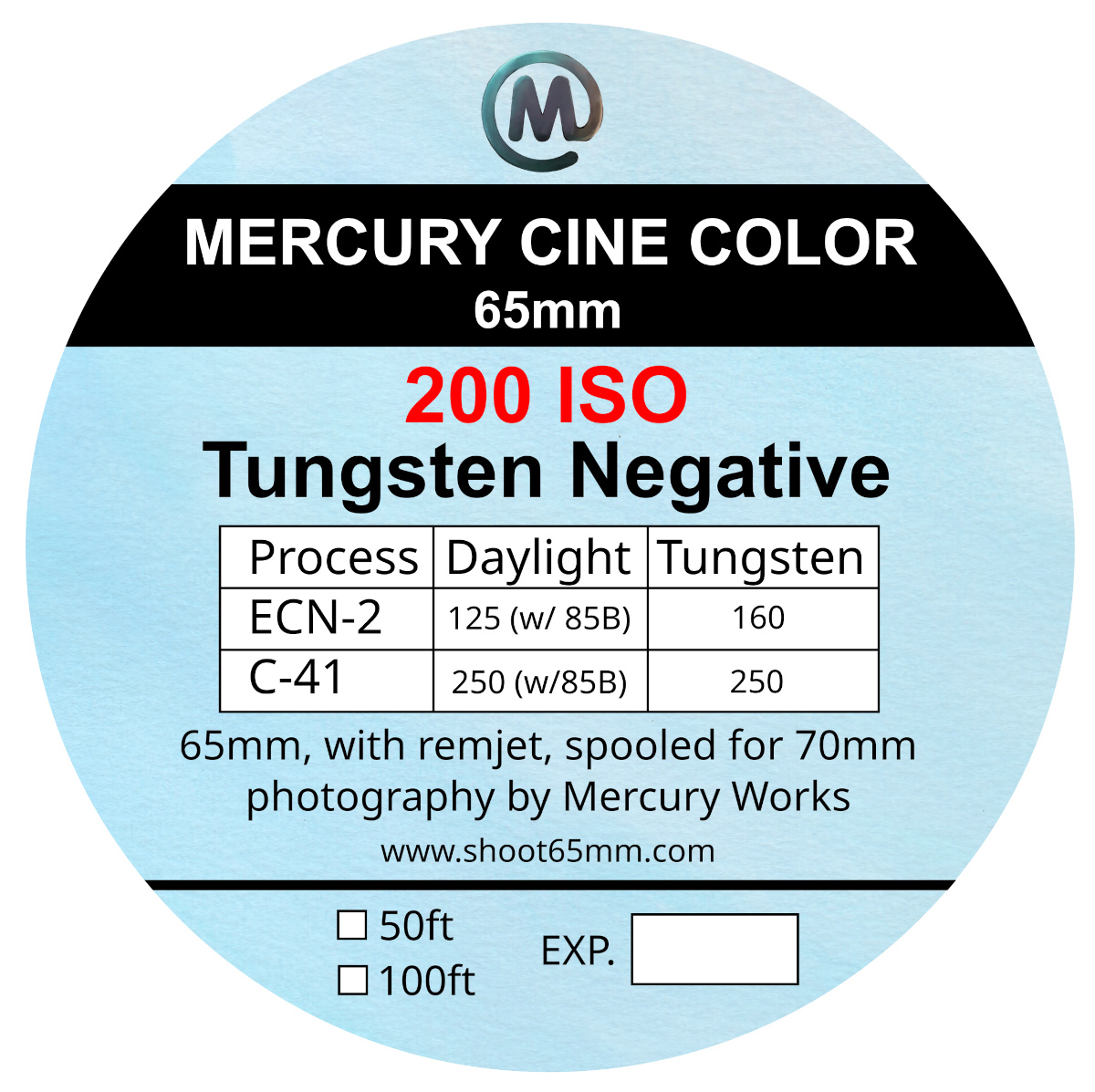
A combination of daylight-balanced Cine 250 and tungsten-balanced Cine 500, this is a fine-grained tungsten-balanced film for interior shooting under controlled lighting. It produces rich colors and very fine grain. It can also be used in daylight with an 85B filter for fine detail. Unlike the other stocks, which are freshly manufactured, our supply of Cine 200 "expired" in 2016. Kodak hasn't made a batch of this film in awhile, so we only have a limited supply. Our supply of Cine 200 has been frozen since that time and shows no signs of age except a slightly sensitivity loss (we recommend rating it 1/3 stop slower, at ISO 160, and have labeled the can accordingly). We are offering this stock at a lower price for this reason. This is the best bargain of the bunch, and a unique film to boot!
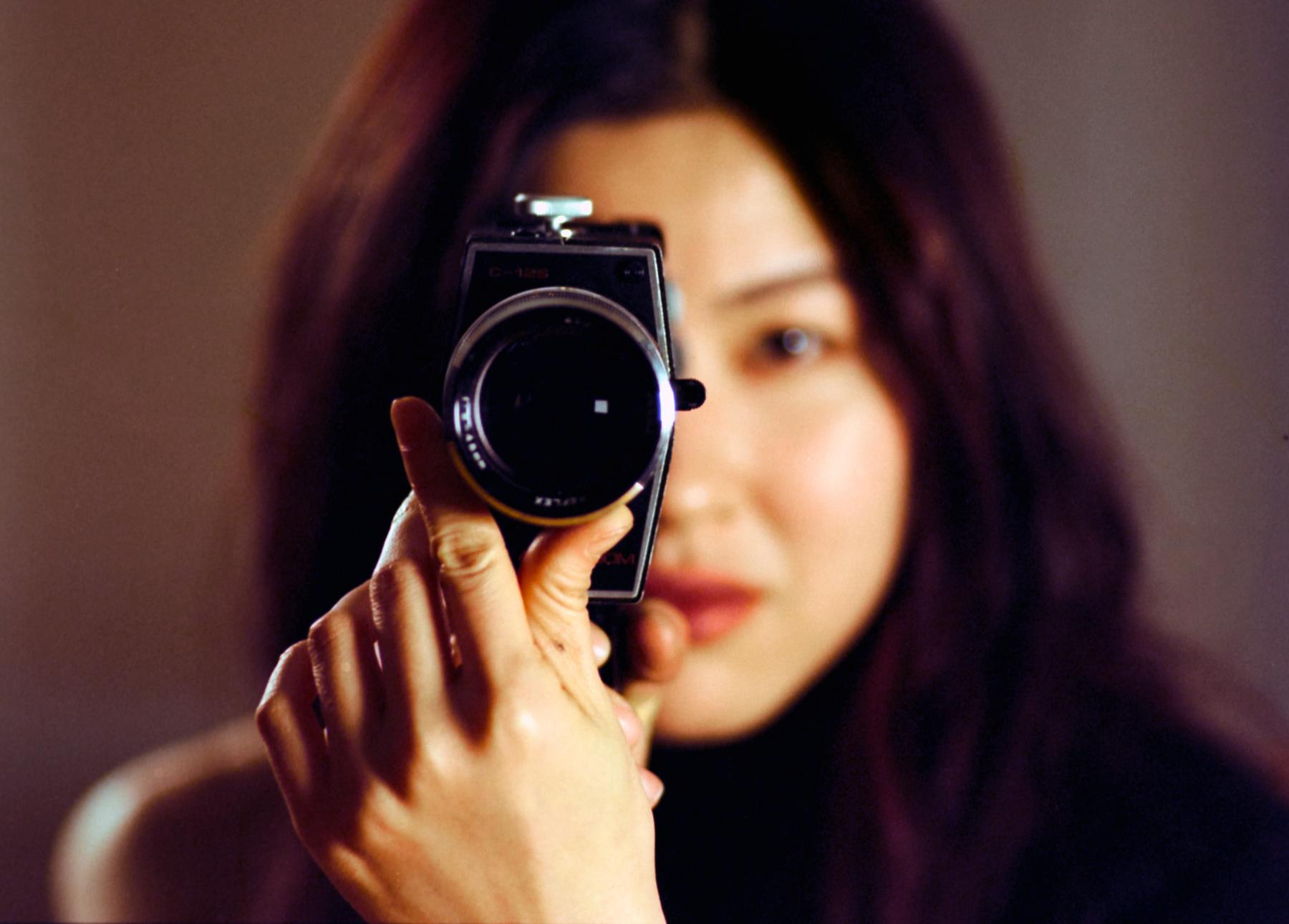
Cine 200 example, shot on a Pentax 645N
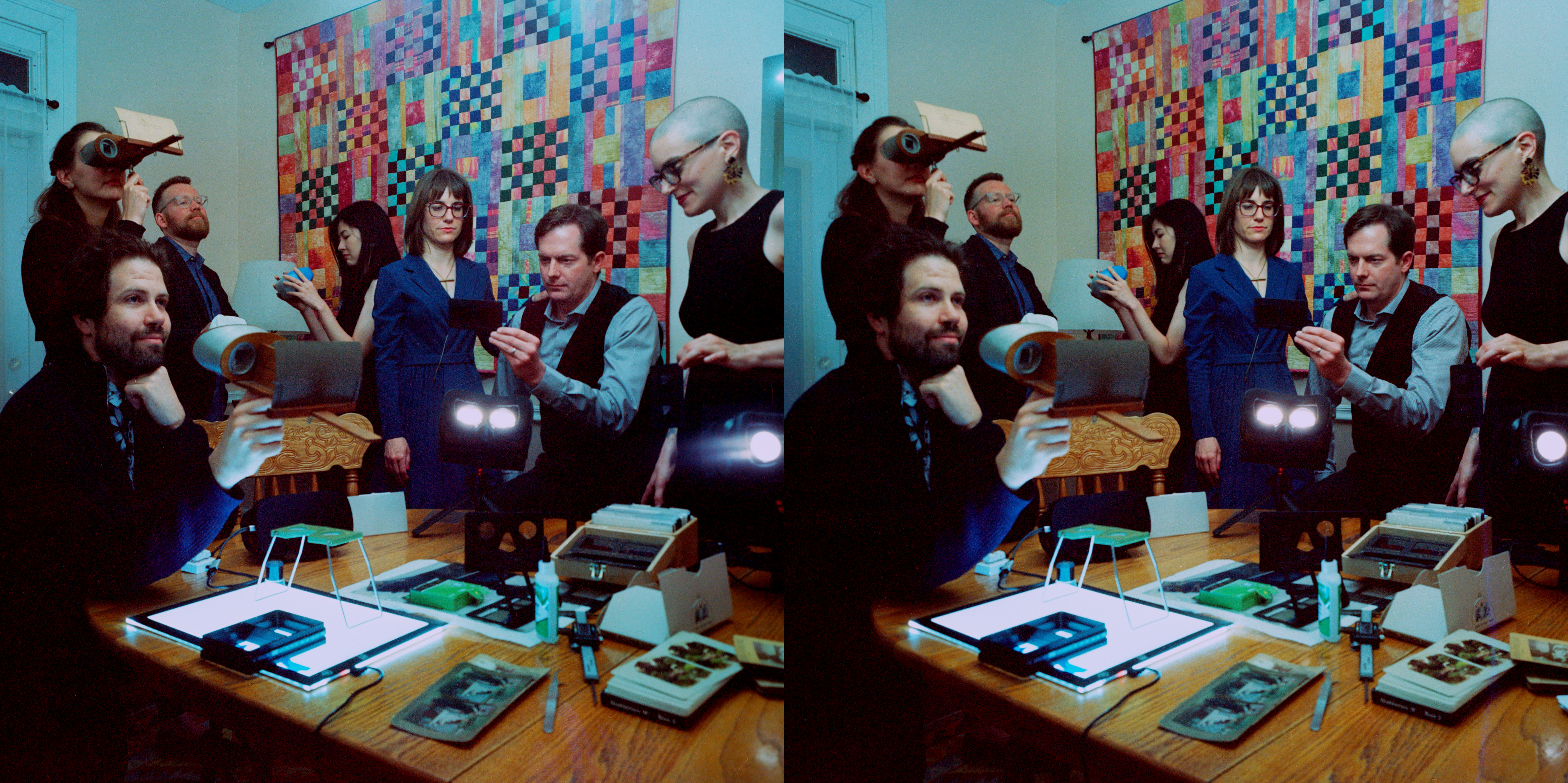
Cine 200 3D example, shot on a Mercury Stereo 12
Malick Film
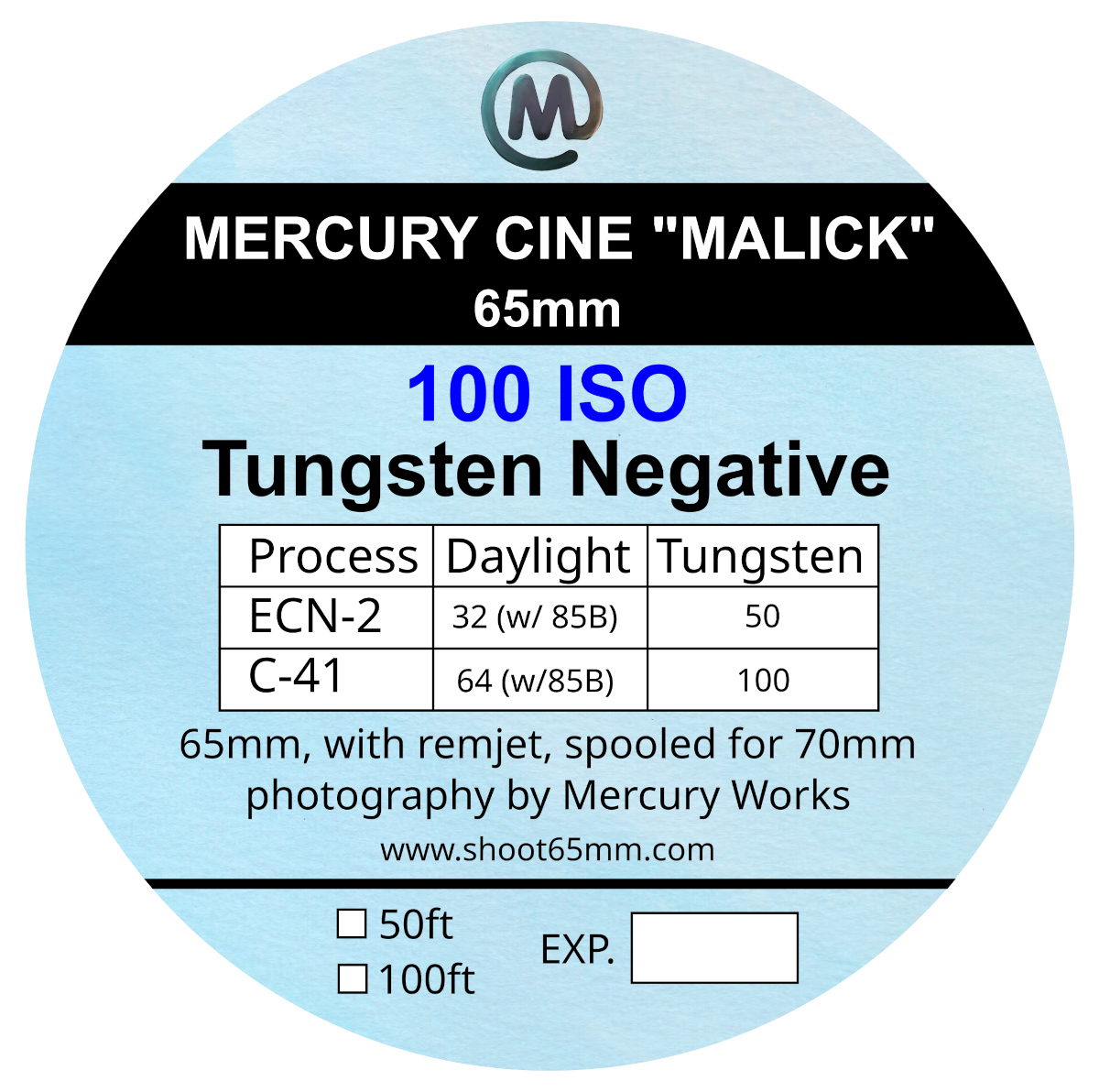
We have a very limited supply of this long-discontinued film. This was manufactured in 1996 for a major Hollywood production, which we believe to be Terrence Malick's The Thin Red Line. A Tungsten-balanced stock, it is rated at 100 ISO, but better shot at 50 ISO at this point (as labeled on our can). This stock has been fully tested and produces a beautiful look. We're offering this as a free bonus to users to purchase our "65mm Sampler" film bundle.
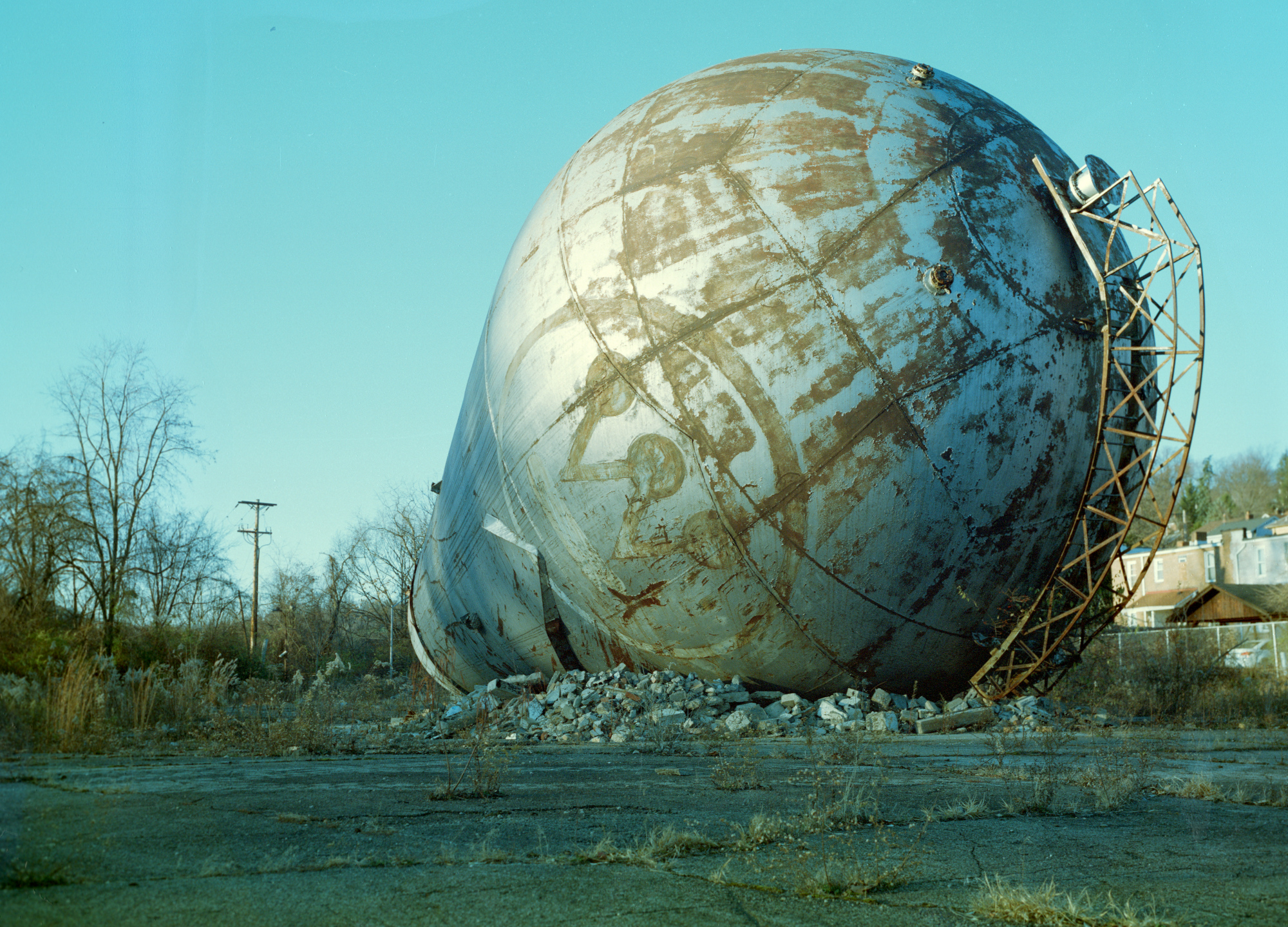
Malick film example, shot on a Mercury Universal 6x9
Processing
M-Alchemy is our new, full service photo lab. We have created custom developing machinery to process both 70mm and 65mm motion picture film, and are committed to the long-term support of these formats. We can process your film as ECN-2 (the proper process for this film), C-41, or BW. Each can of our film contains the proper ISO settings for both ECN-2 and C-41, in different lighting conditions.
We can develop any length of this film up to 15 ft. We are the only photo lab in the country (perhaps the world) that can process long roll 65mm motion picture film. (We can also process 70mm film in lengths up to 15 ft.)
We can also make medium format transparencies (slides) from your negatives using the print film and processing used for theatrical release prints and the famous 70mm "15 perf" IMAX projection format.
Yes, you can use the same film, process, and output as Oppenheimer and other prestige IMAX films!
We have also developed a new home-processing solution for 65mm and/or 70mm, offered for the first time during this campaign. It consists of a tank, a 65mm reel (with optional 70mm reel available from a third party), and a daylight baffle system adapted from components from the familiar Paterson daylight inversion system.
The Spools
All of our 65mm film comes on the same 100 ft bulk spool, compatible with 70mm bulk spools.
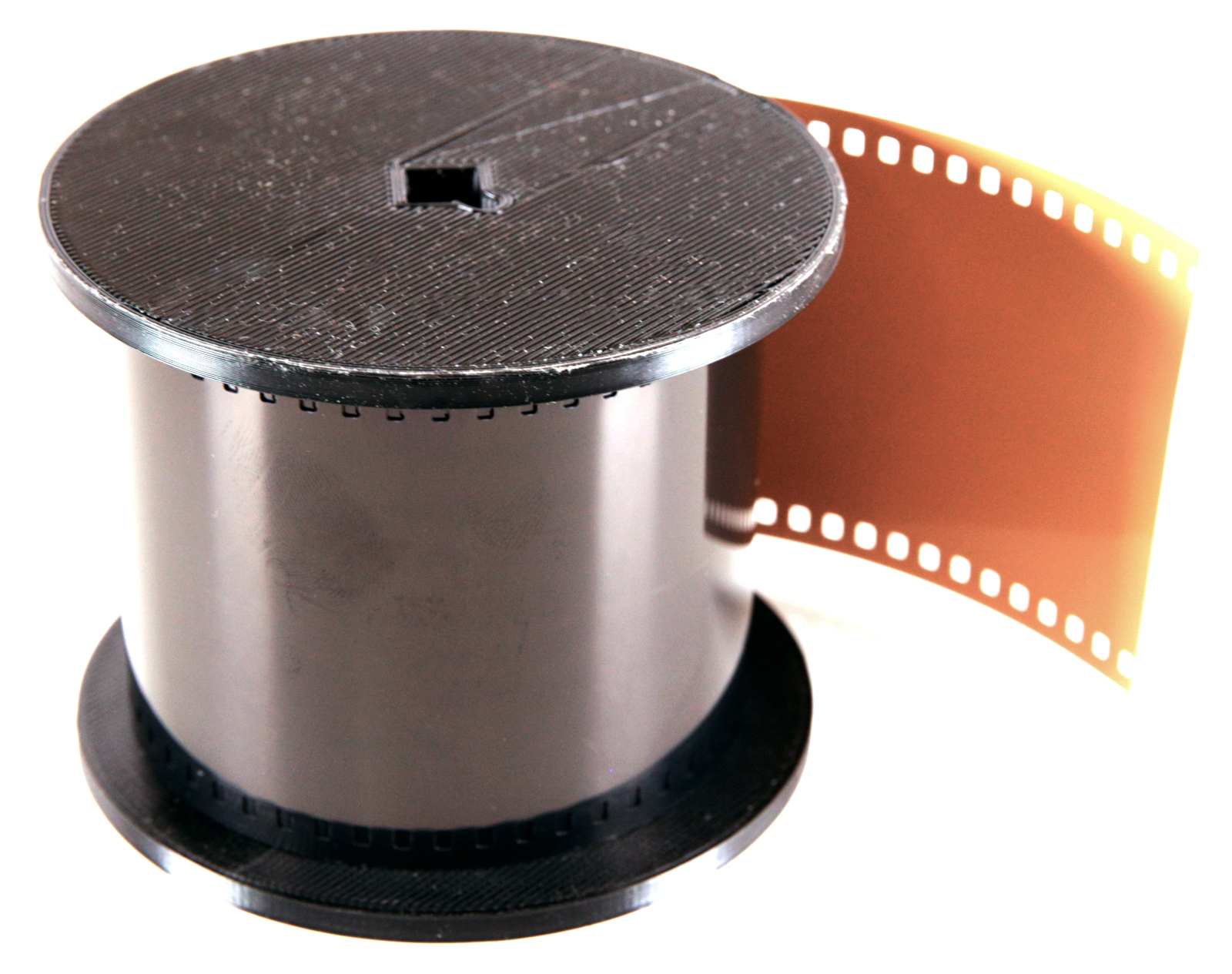
Every film back order comes with a pair of our custom cassette spools. If you are not purchasing a back, don't forget to add a pair of these, as they are required to properly align your film!
We offer three versions of these, which you will choose between when you order. The first perfectly centers the film vertically, for use with backs that natively shoot all-perf, as well as all of the Mercury-modified backs we are releasing as part of this campaign. The second type slightly vertically offsets the film and is designed for backs that were originally designed only for perforated film. This includes Hasselblad V backs, Mamiya RB67 backs, and the 645 backs. Beattie Coleman Transet backs take their own type of spool.
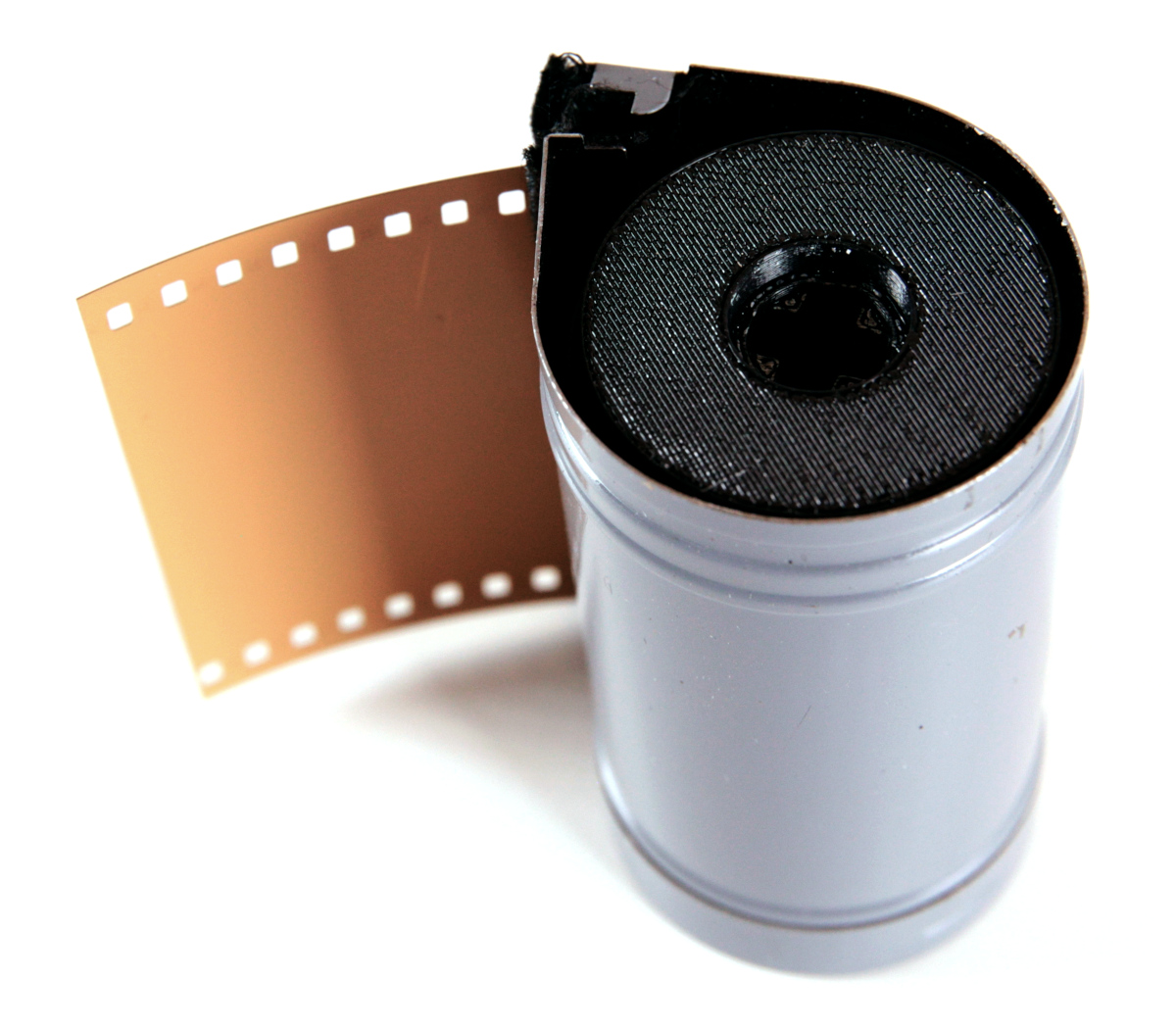
Our offset spools still retain the full image area (the area between the 65mm perforations), but the 53mm tall image will be shifted toward the top of the frame (for Mamiya RB67 backs) or the left edge of the frame (in Hasselblad backs) by 1.5mm. Because 70mm backs expose a standard 56mm tall image, this means that 3mm at the bottom of the frame will be exposed onto the film's perforations and thus unusable (unless you want to include the perforations in your shots). Our centered spool exposes 1.5mm of perforations at both the top and bottom of the frame.
This video demonstrates how to load 65mm film into standard 70mm cassettes using these spools:
The Backs
This 65mm film can be shot in any 70mm back, but we have created some special backs to take advantage of this amazing film in ways that vintage 70mm backs never attempted. We have a very limited supply of these backs and are offering them just for this campaign.
Large Format and Medium Format Stereo Backs
Our 65mm/70mm Panoramic back is built/re-built out of a vintage Graflex RH-50 for large format cameras. While that back could only shoot 6x7, ours shoots the standard 6x12 panoramic format (popularized by the Horseman 6x12 120 back). But while 120 6x12 backs can only expose 6 shots per roll of film, our back can expose up to 31 panoramas on one 13 ft roll of 65mm film! (Or 34 shots on one 15 ft roll of 70mm film.) This back can also be used on the new Mercury Stereo 12 medium format 3D camera (and some of our very short supply has already been sold to Stereo 12 customers. These backs mount on all Mercury Universal large format cameras, the Mercury Stereo 12, and all large format cameras that use the Graflok/International mounting standard.
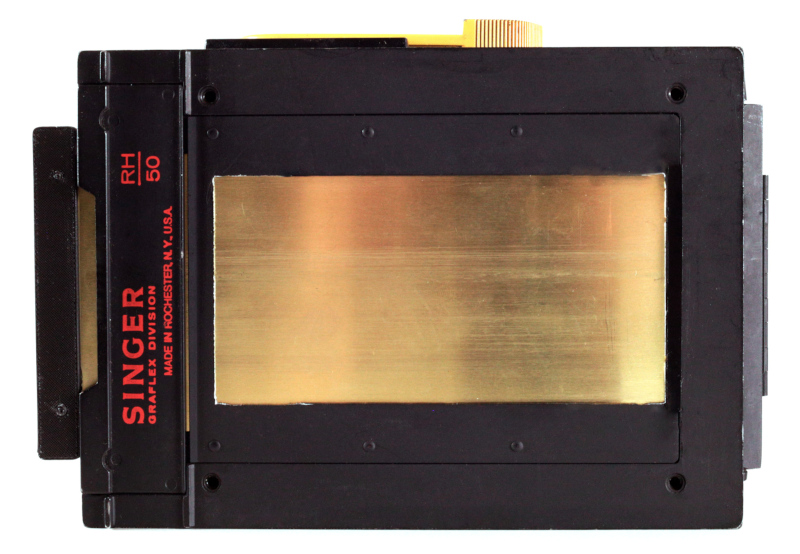
Mercury 65/70mm Panoramic Back
We have only a few of these backs left, but are quite proud of them: Combined with IMAX film, we're convinced that this is the best film back ever produced!
How to Use the Mercury 65mm/70mm Panoramic Back:
For large format photographers on a tighter budget, or who wish to carry more than one of these stocks with them simultaneously, we have also developed a series of 65mm panoramic modifications of sheet film holders. These allow you to easily load two 120mm long panoramic strips of IMAX film into a thin, light holder (one strip per side).
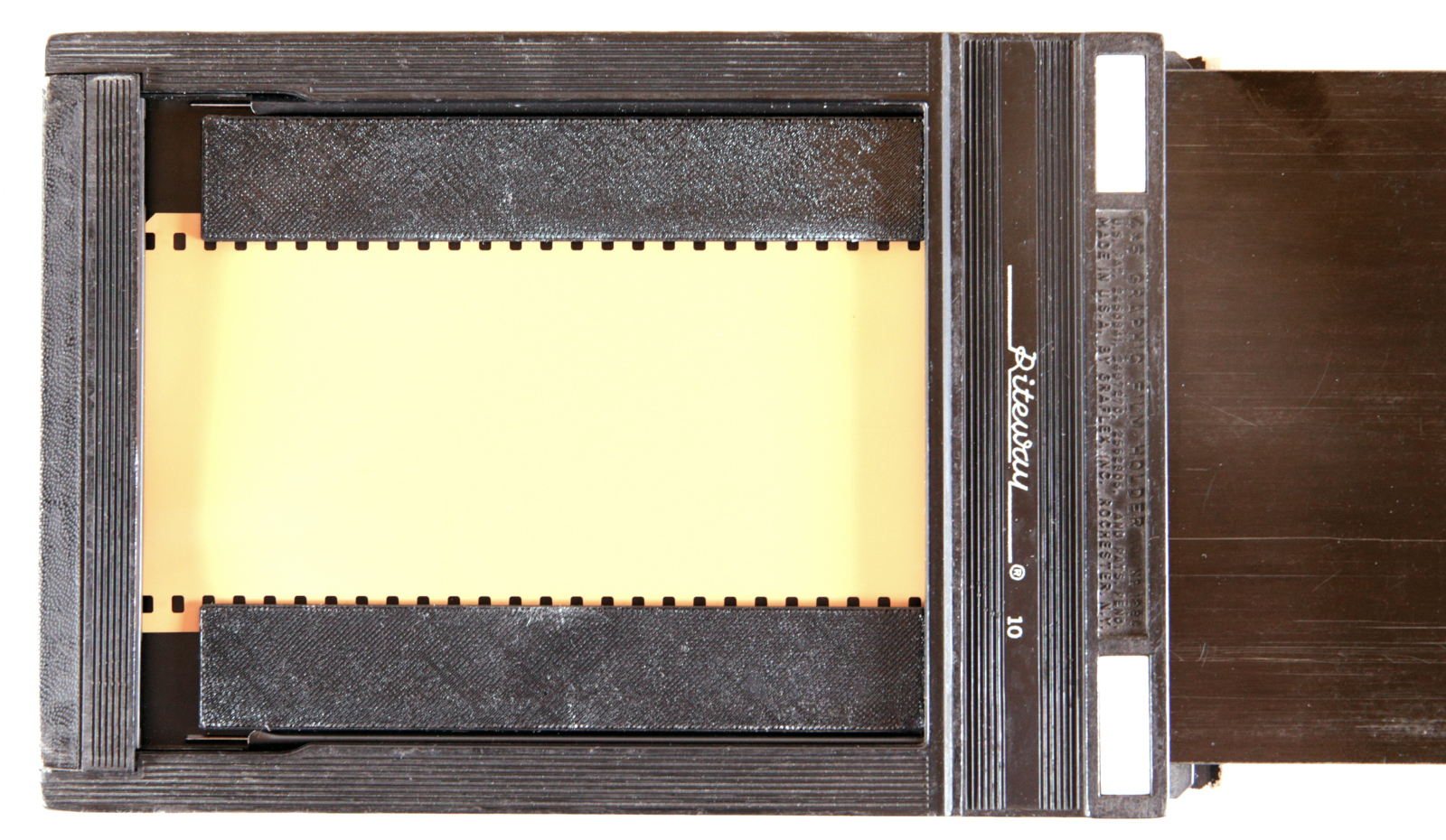
We produce these in both plastic versions and, exclusively for Mercury camera users, special metal/wood versions that have been slotted to mount directly to Graflok back mounts without any need of spring backs or rubber bands.
How to Load 65mm and 70mm Film in Cut Film Holders:
Along with these inexpensive holders, we offer a simple cutting aid that allows you to both cut strips of the film at the proper length for our holders and notch the proper corner for identifying the emulsion side, as large format photographers are used to.
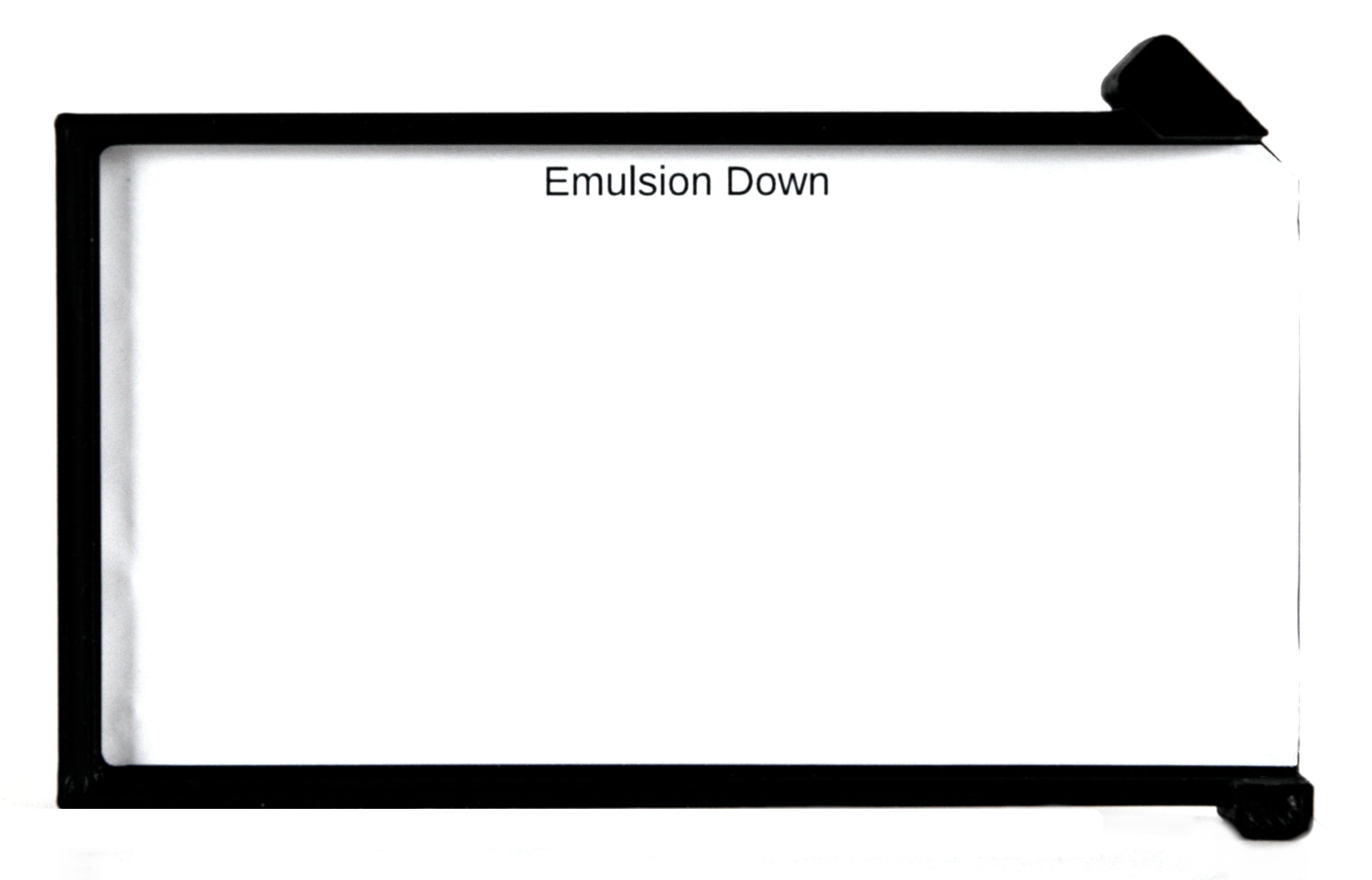
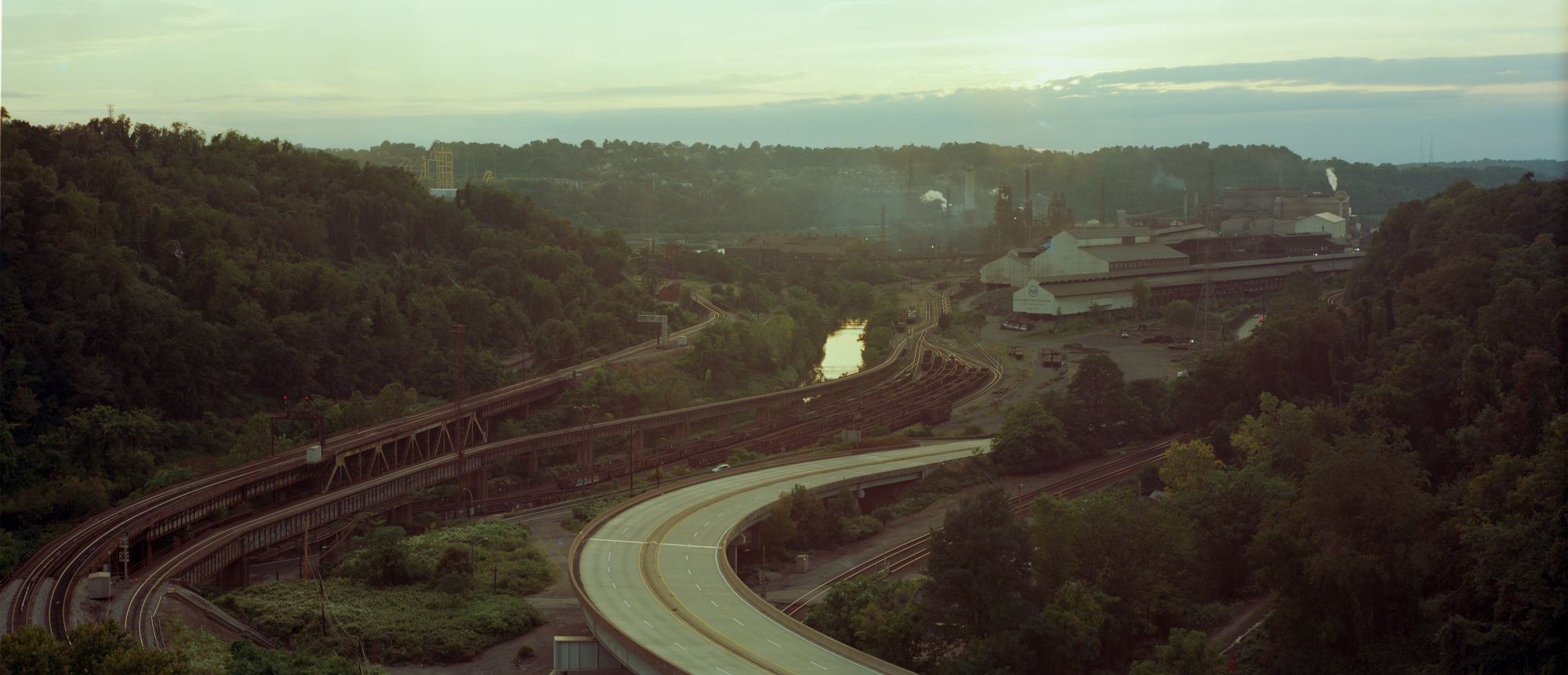
Cine 50 Panoramic example, shot on a Mercury Universal Large Format camera with a Mercury 65mm sheet holder.
For a similar, but more advanced, solution, we create custom septums for Graflok 45 backs. This enables you to mix and match various film formats, shoot your frame non-linearly, and slim your camera down considerably:
Medium Format Stereo Backs
One of the most popular 70mm backs for medium format cameras is the A70 for the Hasselblad V system. With the addition of our Hasselblad all-perf wheel, you can easily shoot 65mm film in your 'Blad:
We sometimes carry pre-modified A70 backs in our store.
One of the best 70mm products ever designed was Mamiya's RB67 70mm back. It is compatible with the Mamiya RB67 series, but more versatilely, Mercury medium format cameras, Graflex 2x3 cameras, the Horseman VH series of cameras, and many 3D printable cameras. We've made this back even better. Our modified version bypasses the frame counting mechanism and alters the aperture plate. Our 6x6 format version that can produce up to 64 exposure per 13 ft roll, and our 6x9 version that maximizes image size, have been sold out and won't be produced again. We still have several 6x7 versions of this back.
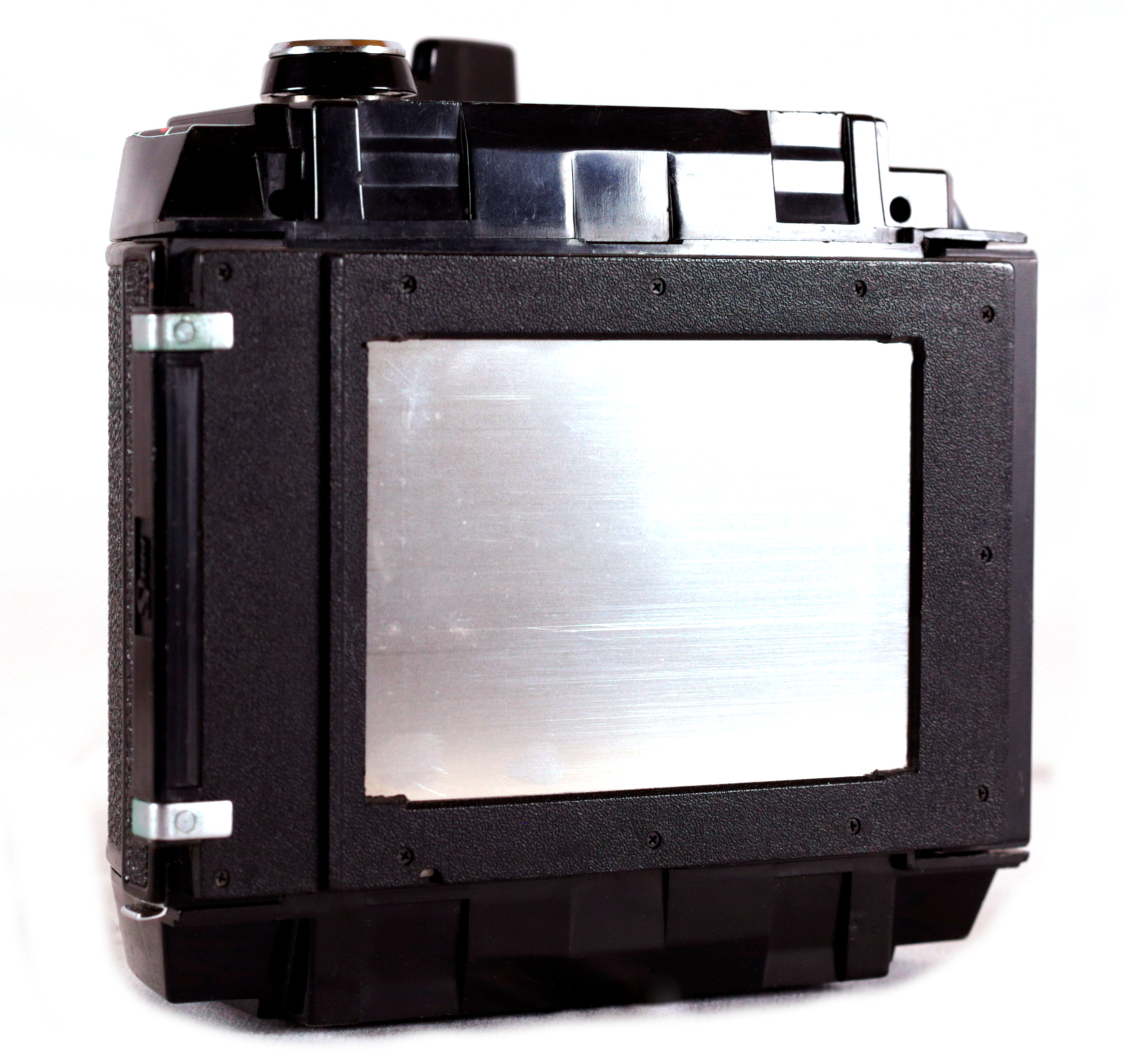
Our modified back can be used with both 65mm and 70mm film, finally exposing the full 6x9 image that most of these cameras are capable of. Both modified backs are advanced by winding the lever to a particular marked line on the back (which shifts several times throughout a long roll). This allows us to disable the frame counting mechanism, making the back full compatible with both perf and non-perf films, and the vertically centered version of our 65mm spool. This makes for an ideal combination: medium format camera compactness, a full 6x9 image size, and no-compromise use of 65mm and 70mm film!
65mm Accessories
We have developed a number of accessories to make using 65mm film easy and efficient.
65mm and 70mm Bulk Loader
Load a 100 ft spool of either 65mm or 70mm film on one side and a 65mm or 70mm cassette spool on the other. Use the included rotating handle to quickly roll film onto the cassette spool. By counting turns you can load as little or much as you wish in a particular cassette (up to 13 ft for 65mm film; that's exactly 50 turns!). This kit includes a series of adapters for different 70mm spools types. For 65mm, you'll use the standard square adapters.

Our bulk loader must be used in darkness, but it very easy and fast to use. 65mm film contains a robust anti-static, anti-scratch, anti-friction base coating (called remjet) that allows you to spool as fast as you like! See this video for instructions:
65mm Cassette Splicer
This device allows you to attach a previously developed length of film to the head of each of your loaded cassettes. This way when you daylight load any 70mm back, you won't be exposing more than 2 inches film! This allows you to waste no film. It uses standard Scotch Magic Tape to attach your leader, and can be used in the light after you've loaded your cassette.
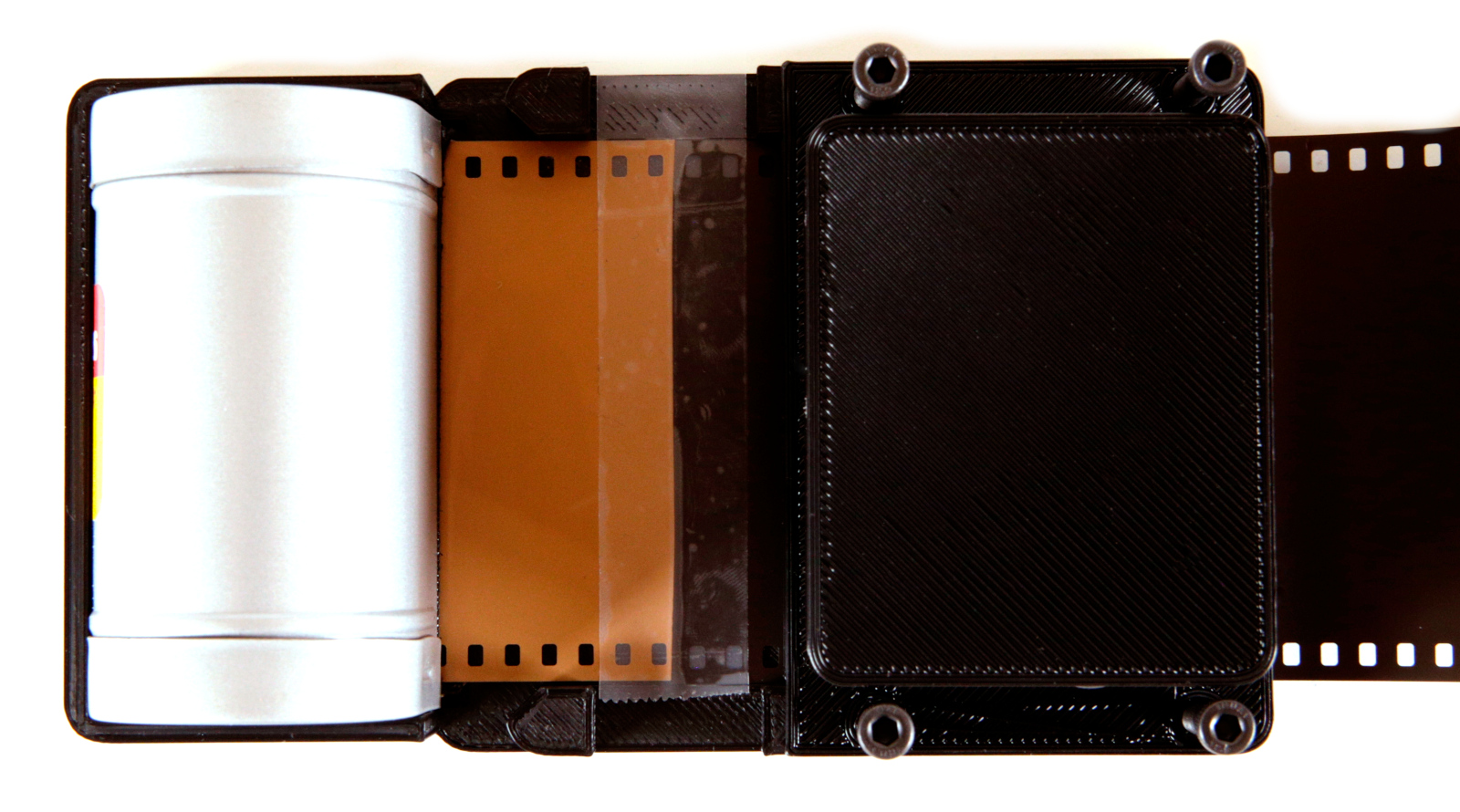
This splicer only works with 65mm film. We offer a 70mm version as well.
65/70mm Home Developing Tank
As explained above, this is a daylight developing tank for simple inversion processing of your film. When you purchase it you'll have options to include a 65mm reel, a 70mm reel (made by a third party), or both.
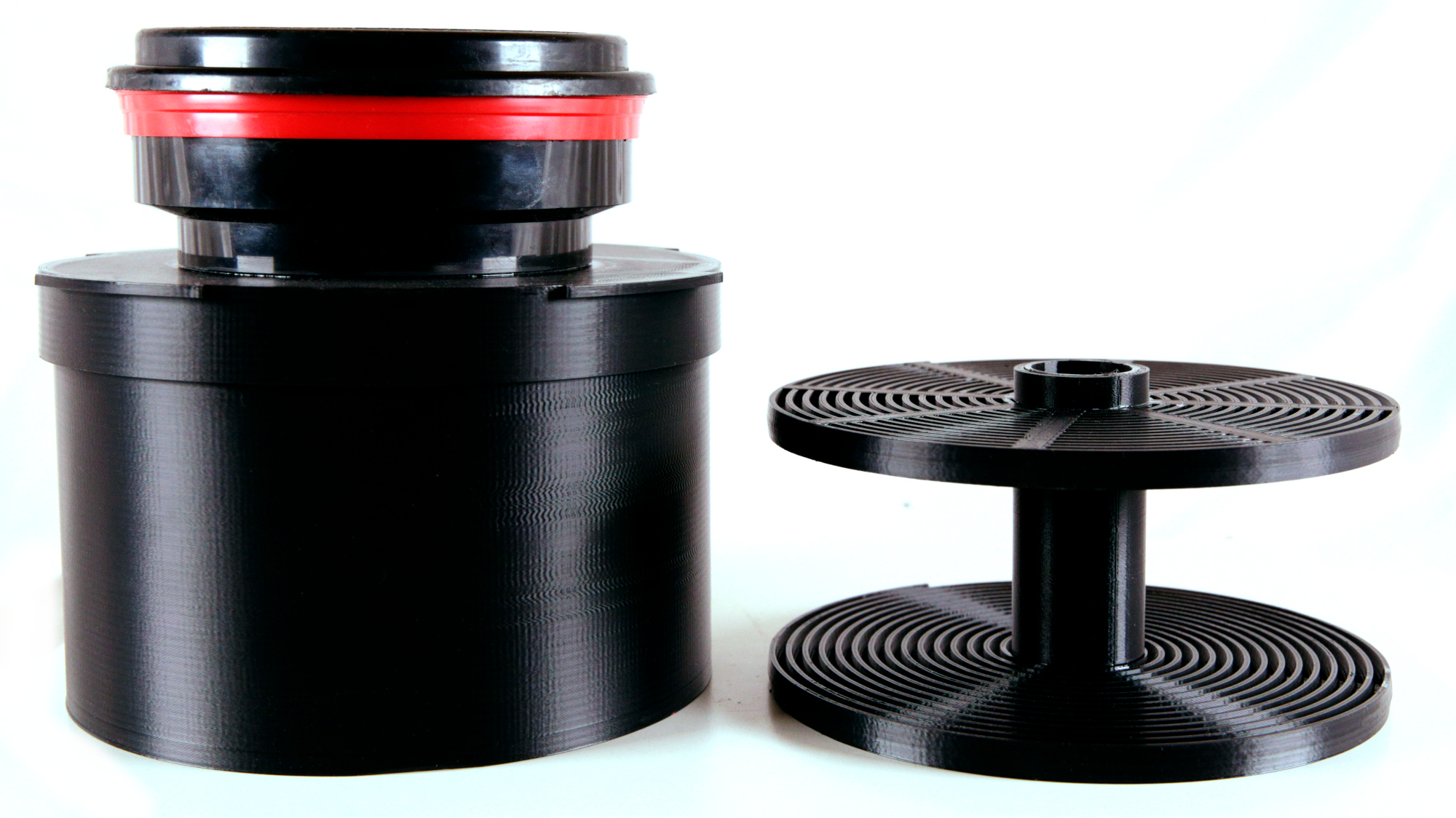
For both 65mm and 70mm, this system is limited to a maximum of 13ft of film. All components are made of chemically-resistant ABS.
65/70mm Cassette Canister
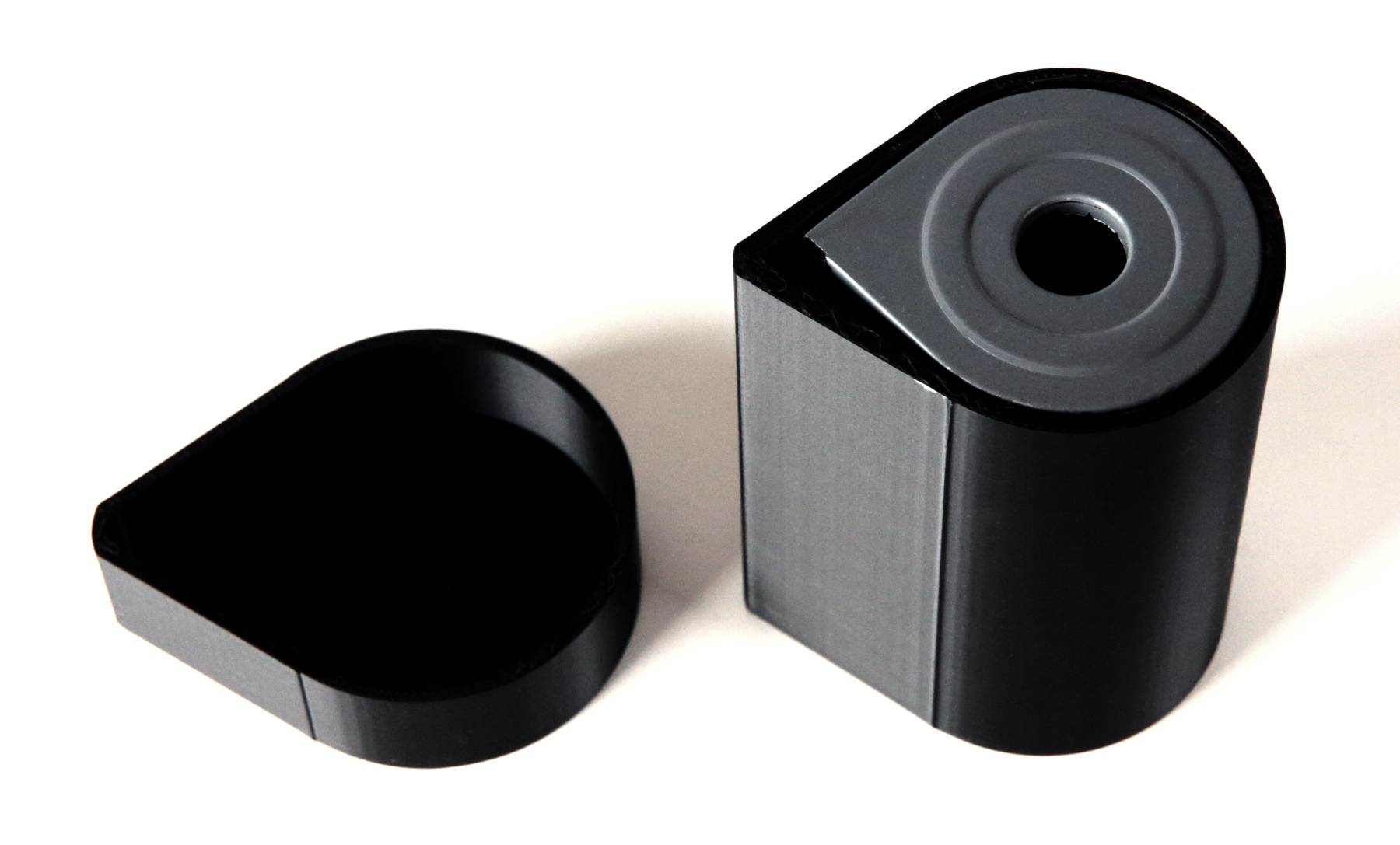
This robust, compact canister holds one 70mm cassette, loaded or unloaded with film, to protect it from both light and physical damage) when traveling or in your photo bag.
65/70mm Spool Canister
This is like our Cassette Canister, but designed to hold one 65mm or 70mm spool without the cassette. If you plan to ship M-Alchemy your film for processing, this is our recommended container.
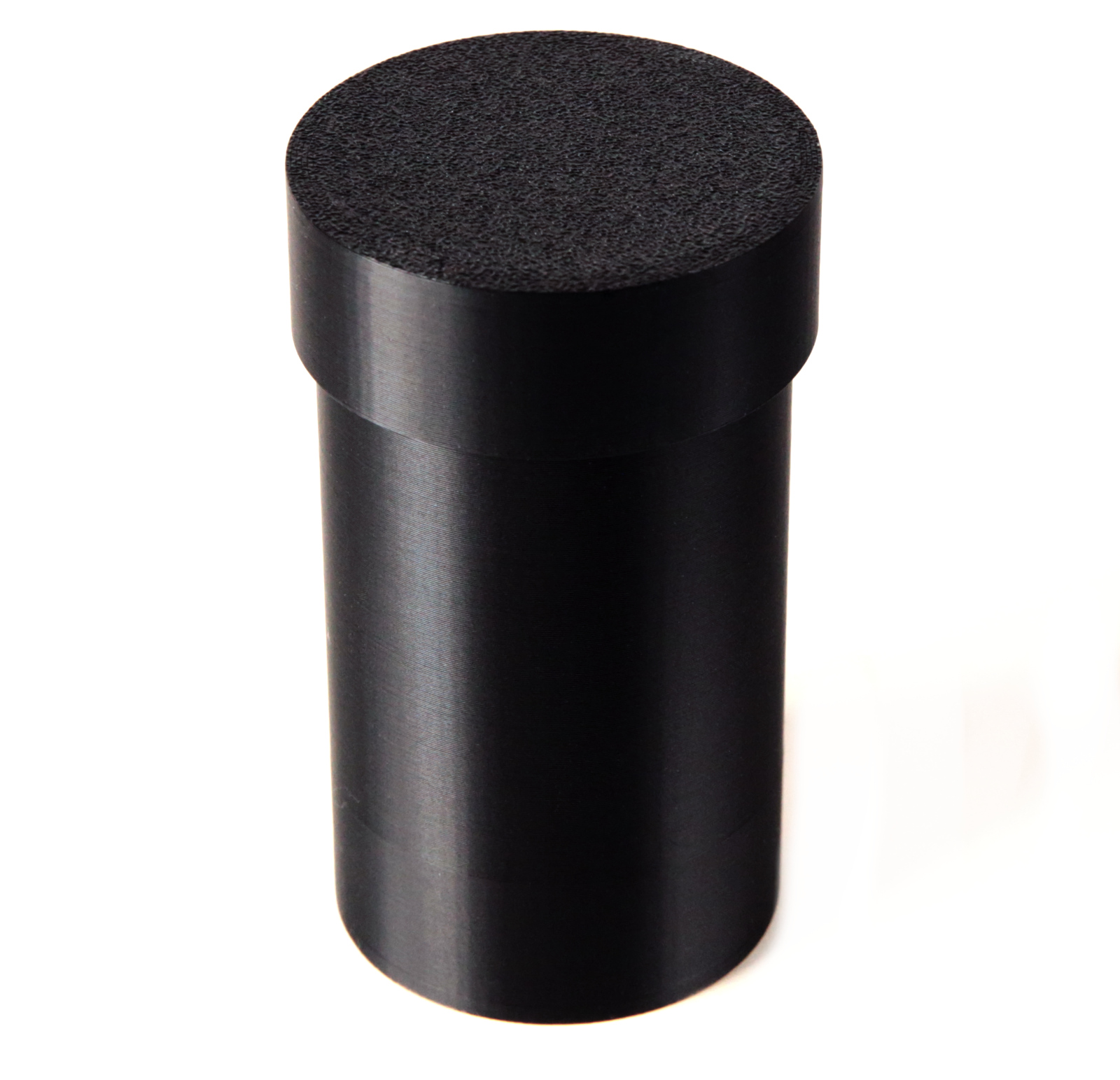
65/70mm spool canister
FAQ
Q: If this film is so much better than available 120 films, then why is it so much cheaper?
A: We can offer this film so cheaply because it is made in huge quantities for the film industry and quantity means economy of scale. It comes to us in bulk form, which also cuts down the cost. We have to create the bulk and shooting spools and re-package it in user-friendly cans so that it is easy for you to shoot. We are fortunate that Kodak is making this available to us (it is not ordinarily available to the public). We have designed special equipment to turn these unmanageably large rolls into manageable ones for you! The other factor that saves cost is that this film doesn't go through the wasteful and expensive process of being taped up with backing paper and packaged in very short strips for the 120 format. You are getting the raw stock, packaged for photography use.
Q: Will this film be available long-term?
A: Yes! We are committed to making this film available for many years into the future. Of course, we can't control what Kodak produces, but we plan to do this for many years. IMAX film is something we've invested a lot in, and are very excited about. We can't guarantee that all stocks will be available at all times, but in the long run you will have access to this film. We believe that it is wise to invest in this format.
Q: Will your custom 65/70mm film backs be available in the future?
A: There's much less guarantee of that. We have sold out of many of our modified backs, and will likely never offer them again. Others are still available, or have become available again, due to new supplies. Eventually, however, our specialty 65mm and 70mm backs are likely to sell out for good. Our 65mm sheet film holders for large format and Stereo 12 shooters will likely be able to be supplied well into the future, though. And of course other 70mm backs that take our spools will continue to be available in the future.
Q: Do the perforations on this film match 70mm perforations?
A: Technically, these perforations match the "Type 2" standard found on some 70mm film (and 35mm film), but they are not located on the film in the same place. It is possible in some rare cases (such as the Pentax 645) to utilize 70mm Type 2 sprockets in backs to engage 65mm perforations on one side, but this won't work for most backs. In most cases, then, we ignore the perforations in 65mm film and treat is as "non-perf" film.
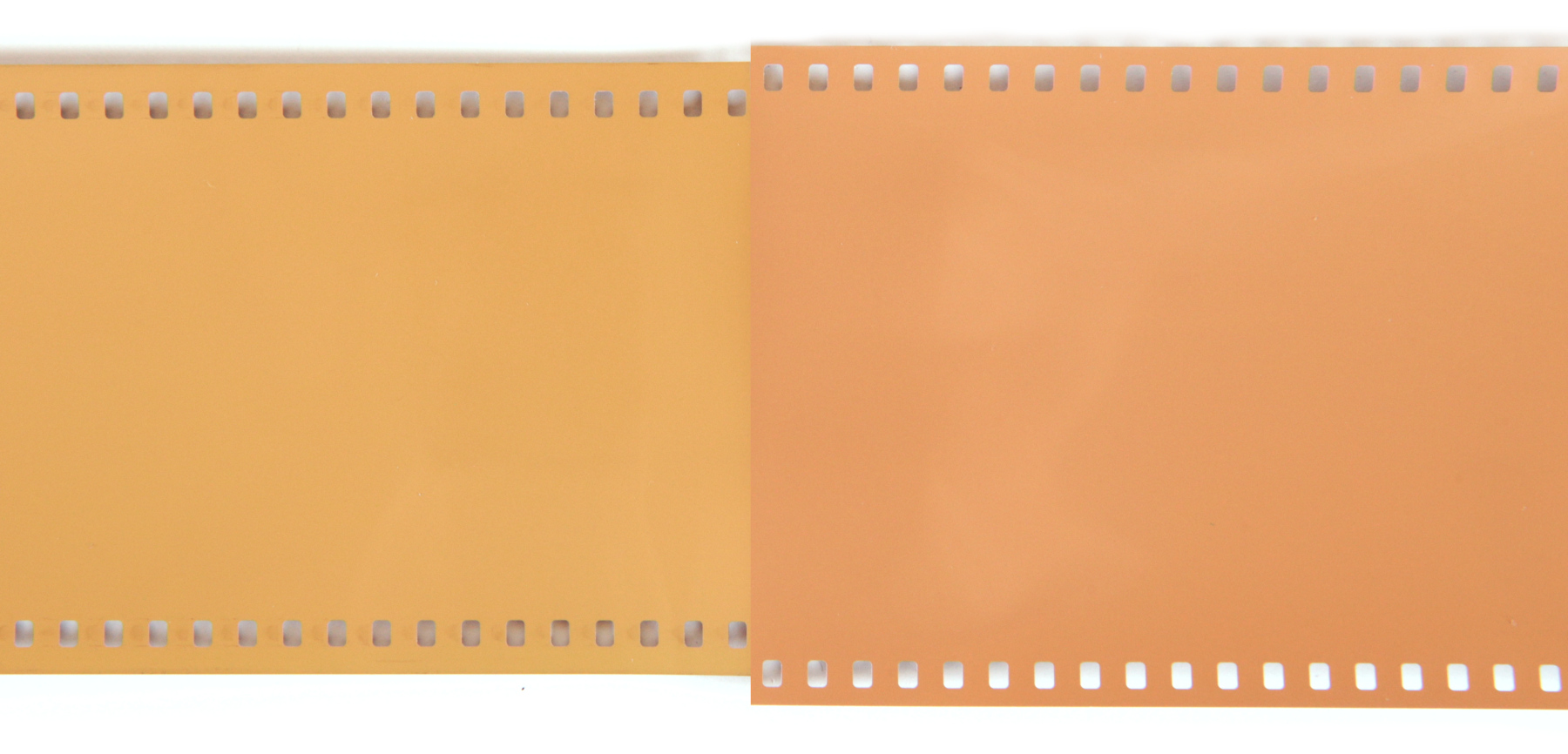
65mm vs. 70mm film size and perforation comparison
Q: Do the perforations on this film get in the way of the image?
A: Yes, a tiny bit. Each perforation cuts a little over 1mm into the nominal image area of medium format cameras. This reduces the effective image area from 56mm in height to 53mm in height. The width of the image is not affected.
Q: When does this film expire? How long will it last?
A: Kodak doesn't place expiration dates on motion picture film. The concept of expiration dates are really
tied to consumer film that goes through a long supply chain, so you can tell how fresh it is at the point of
purchase. The film we're offering here (except for our Cine 200 and Malick film) is fresh from Kodak, manufactured this year. In consumer terms, it
would expire sometime in 2025. If you freeze or refrigerate this film it will last for MANY years without
issue. At least 10 years for most of the stocks. Cine 500, as a faster stock, is less stable over those time spans.
Our Malick film "expired" 25 years ago, was not properly stored for much of that time, and still produces beautiful images.
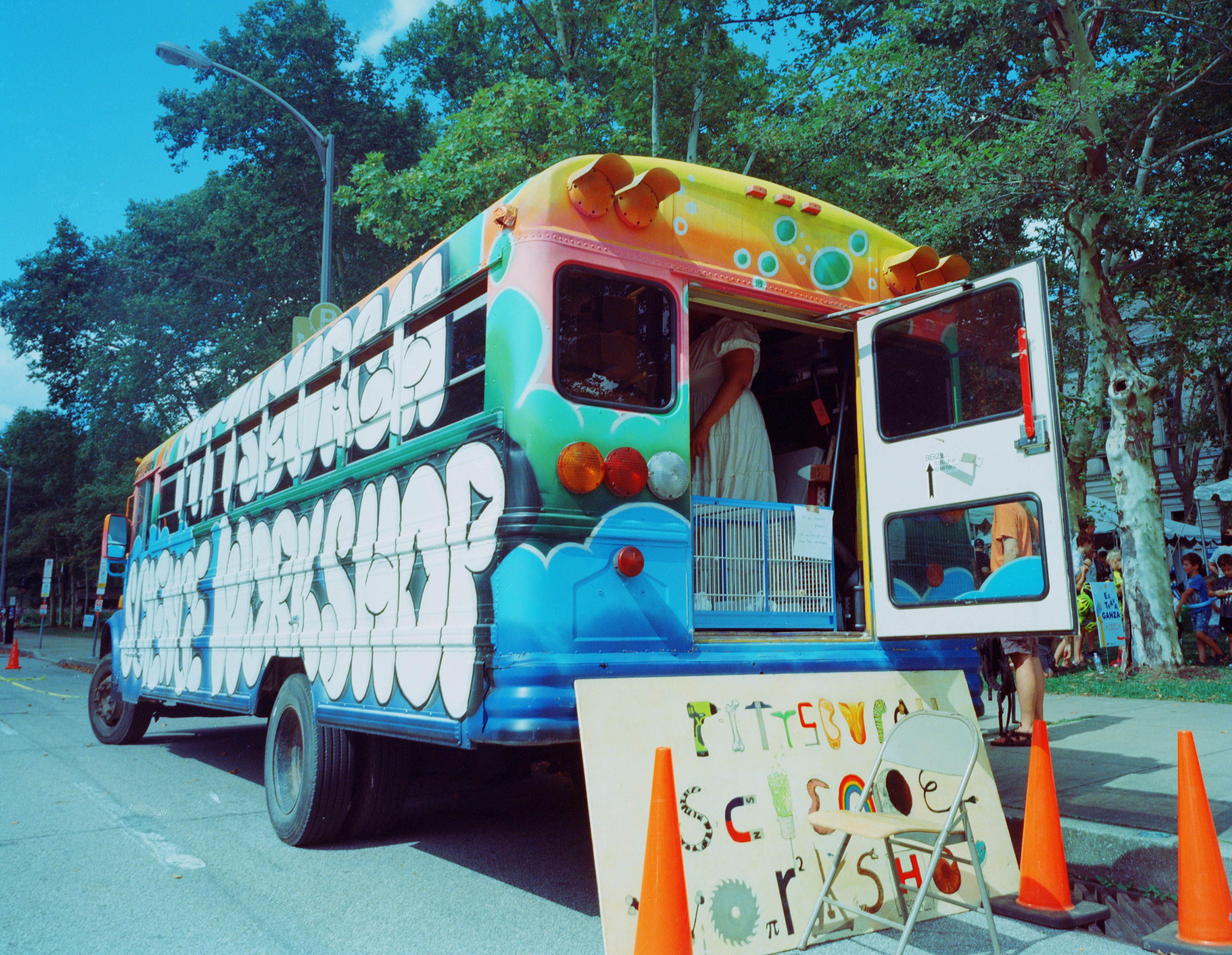
Cine 250 example, shot on a Mercury Stereo 12
Q: What are the benefits of the remjet layer on this film?
A: Kodak developed this remjet layer to enhance the characteristics of their motion picture films over the simple dye layers in their still photography films. The remjet is the "secret sauce" of these films. It provides superior anti-halation properties, preventing light passing through the film from reflecting back up (off of the back's pressure plate, the interior of the camera, or even just against the film base itself). Halation creates distorted color, halos around bright objects, and other problems under certain conditions (i.e., it varies with the degree of exposure). The remjet layer also provides critical protection from light leaks and halts "light piping," when light travels through the edge of the film and spreads further down the roll. Next, the remjet layer has strong anti-static properties, which prevents static discharge from exposing the film. This static discharge can happen when advancing film. These problems don't crop up when the remjet layer is intact. Finally, remjet provides a thick anti-scratch coating, protecting the film from transport in the camera/back handling while loading, and while processing. The remjet makes this film extremely robust and, in short, resistant to the many conditions before, during, and after shooting that can compromise film. The remjet is one of the high-end features of the film that make it superior to still films. We are proud to bring you remjet-intact film, ready to shoot. Our 65mm IMAX film comes with no compromises: you get the full quality of Kodak's motion picture film, at less than half the price of 120 film, with the added benefit of variable roll sizes, reloading 80% less often, flatter film, and the ability to split a roll for development at any mid-way point.
The film contained in these products is respooled KODAK Motion Picture Film. The respooled product is not manufactured by, approved by, or endorsed by Eastman Kodak Company.
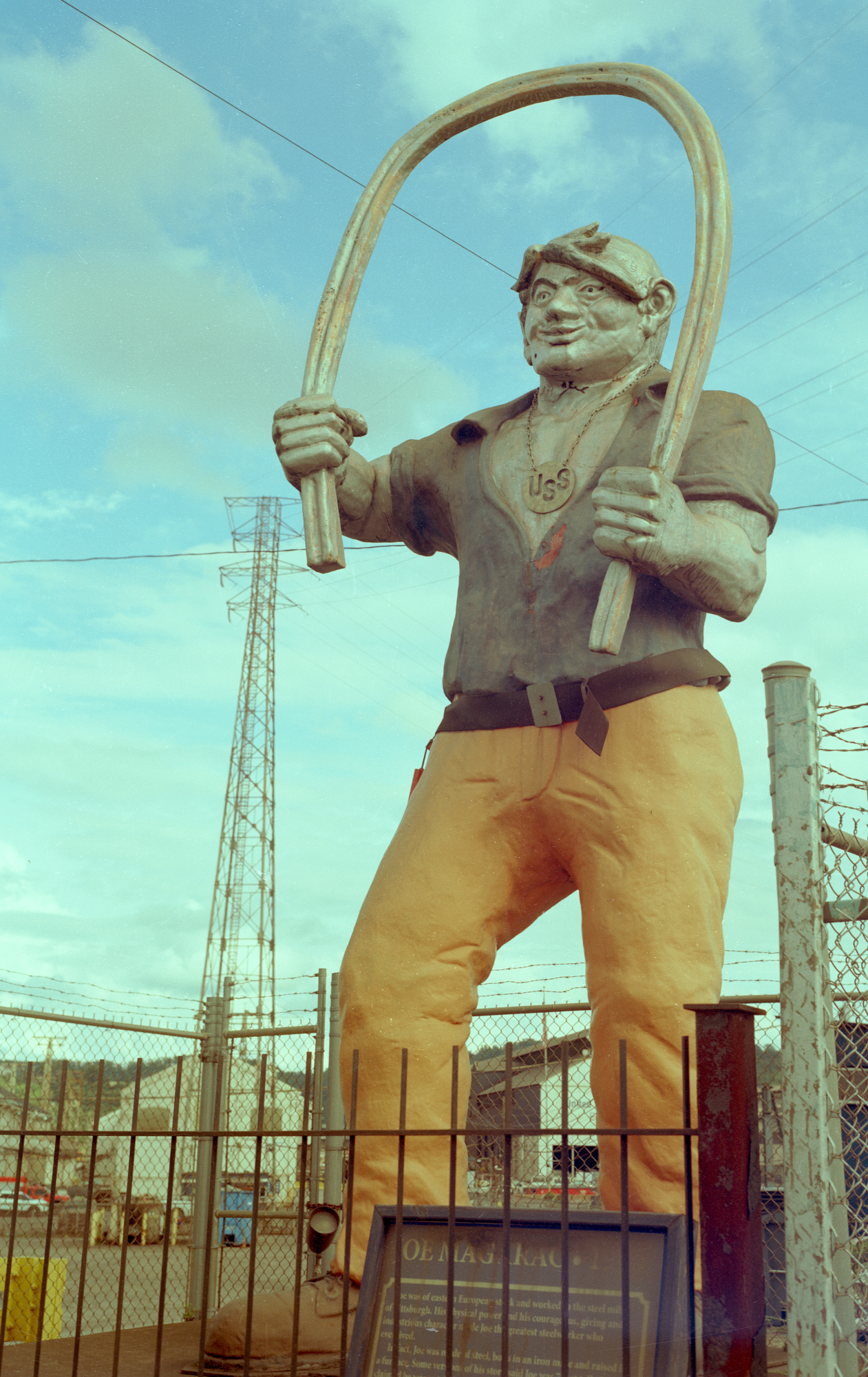
Cine 50 Panoramic example, shot on a Mercury Universal large format camera with Mercury 65mm sheet holder
Order film here !